Website design has become more straightforward thanks to drag-and-drop tools like Divi and Oxygen Builder. But which one is better, Divi or Oxygen? Let’s compare these two visual WordPress page builders, covering Divi’s easy-to-use interface and AI approach against Oxygen’s straightforward approach.
We’ll also explore the strengths, weaknesses, and distinctive characteristics that distinguish these powerful tools. By the end of this comparison, you’ll know which one best suits your upcoming website project. Let’s get started!
Divi vs Oxygen: Overview
Let’s begin by providing a general overview of Divi and Oxygen Builder. We’ll talk about their backgrounds, methodologies, and what users have to say about them before we move on to a comparative analysis of their features.
About Divi
Divi, developed by us at Elegant Themes, is a game-changing WordPress theme that lets you build stunning websites without the need to know how to code. Divi includes a visual builder, featuring numerous customizable elements, and lets you craft perfect layouts easily. Divi comes as both a WordPress theme and WordPress page builder plugin.
Thanks to its responsive design, your site will look great on any device. Additionally, Divi offers an extensive library of over 2000 ready-made layouts, AI tools, and strong community support to provide a smooth and efficient website-creating experience.
Users on websites such as Trustpilot, G2, and Capterra express their love for Divi by highlighting its ease of use, affordability, customizability, community, support, templates, and much more.
About Oxygen Builder
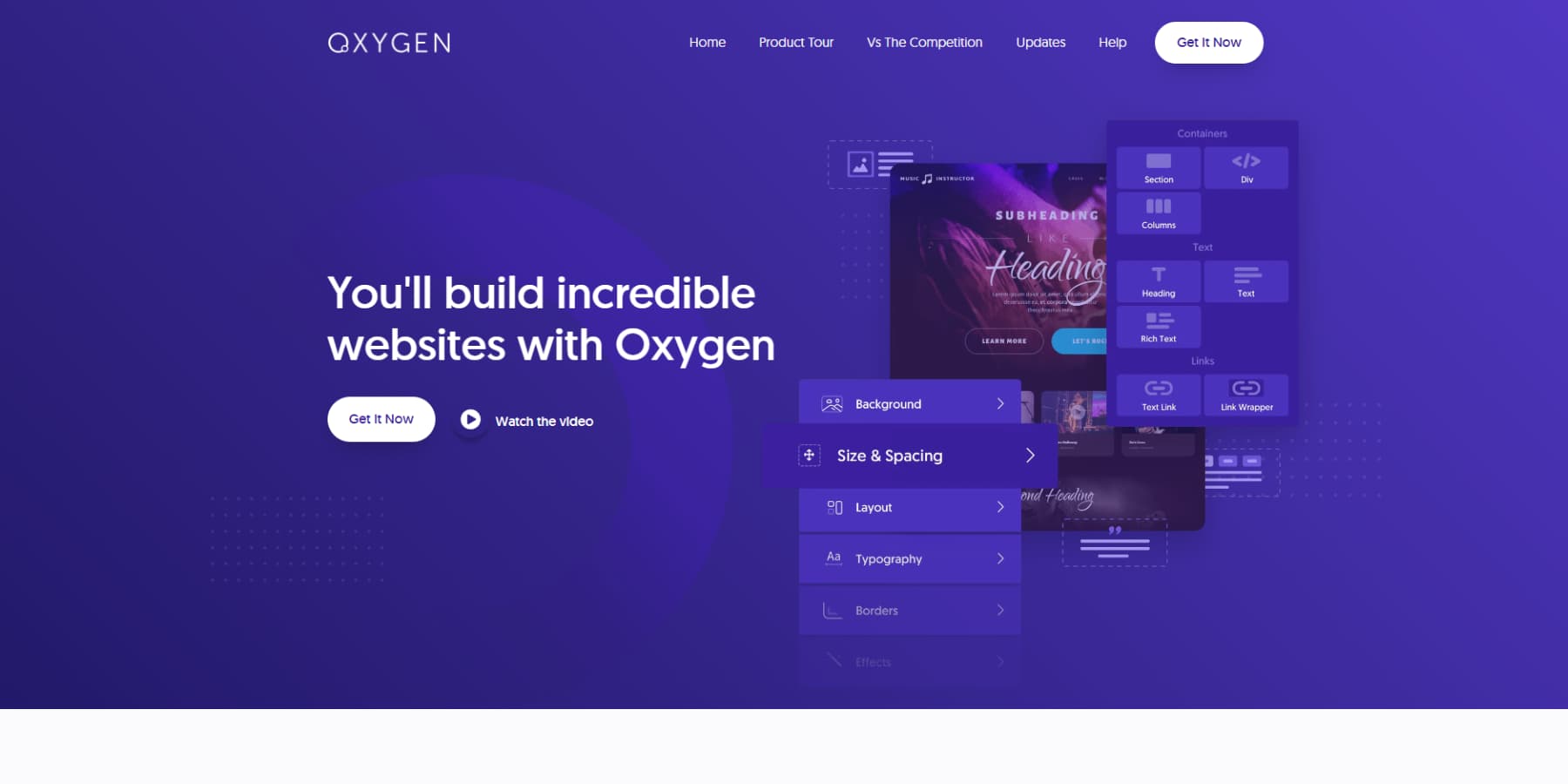
Oxygen Builder, also known as Oxygen, was developed by the popular Soflyy team and is a highly regarded and easy-to-use page builder plugin for WordPress. Its visual, drag-and-drop interface enables you to design beautiful websites with minimal to no coding knowledge.
With a wide array of design elements, advanced styling features, and responsive editing tools, Oxygen Builder lets you create precise layouts that match your brand’s distinctive look. Additionally, it prides itself on being one of the quickest, most efficient, and least bloated website builders available today.
Users appreciate Oxygen’s flexibility, clean code output, dynamic features, easy customization, and fast website loading speed.
Divi vs Oxygen: Features
Divi and Oxygen offer drag-and-drop builders and numerous website creation and design features. Let’s examine each platform’s main capabilities to see how they compare in this Divi vs. Oxygen comparison.
Divi’s Features
Divi offers a variety of tools and features that make website building easier, whether you’re a beginner or an expert. Here are some of its most popular features:
Drag and Drop Builder
Divi‘s Drag and Drop Builder makes creating websites a breeze. Its user-friendly interface allows you to easily design and personalize your pages by dragging and dropping elements like text blocks, images, videos, and more from a selection of over 200 modules to choose from.
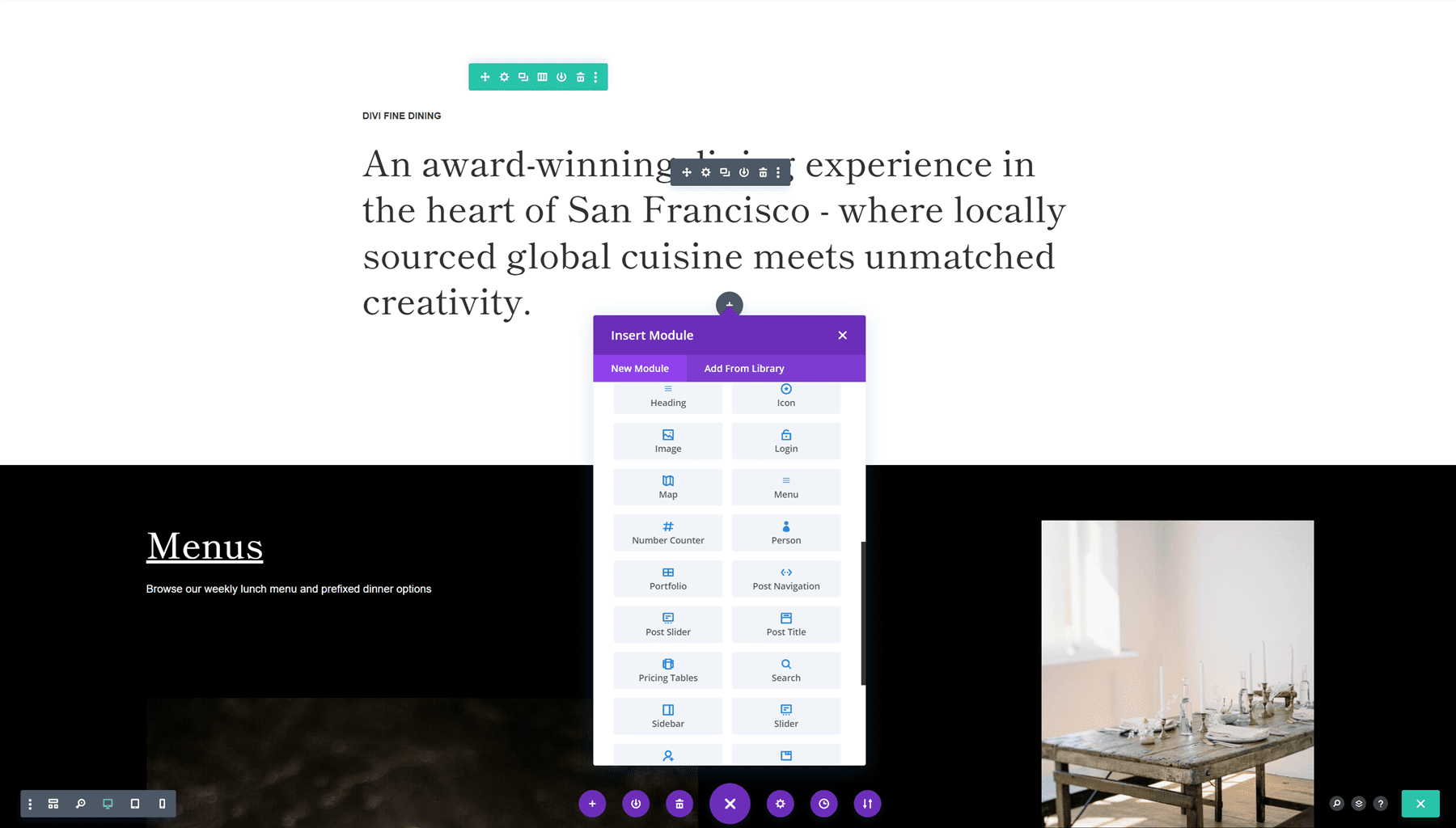
Divi’s builder is a true What You See Is What You Get (WYSIWYG) visual editor, ensuring your design matches what visitors will see. You can click directly on your page to edit in real time, with live previews of every change you make.
The builder includes a variety of predesigned templates and modules, allowing you to create beautiful web pages quickly and efficiently. Each element is customizable with advanced design settings. The builder’s responsive design guarantees your pages look great on any device or screen size. These features make Divi perfect for beginners and professionals, making it an excellent choice for building any website.
AI Features
Divi AI is a handy tool built right into the Divi Visual Builder, helping you easily create websites. It is an add-on to your Divi subscription and entitles you to unlimited (fair) usage.
With many features, AI can generate the entire website’s copy and images by analyzing your website’s context and custom code. It can even craft whole sections and layouts for you. This allows you to mix and match Divi’s many professional designs, adding your personal touch.
eCommerce Features
Divi provides a complete set of eCommerce tools that simplify the process of building and customizing WooCommerce stores. You can access numerous custom WooCommerce modules and a wide range of design settings, giving you complete control over how your online store looks and functions.
Using the visual builder, you can tweak every part of your store, from product pages to the cart and checkout processes, custom headers, and footers throughout your site without needing any coding skills. You can even display dynamic values using the dynamic tags.
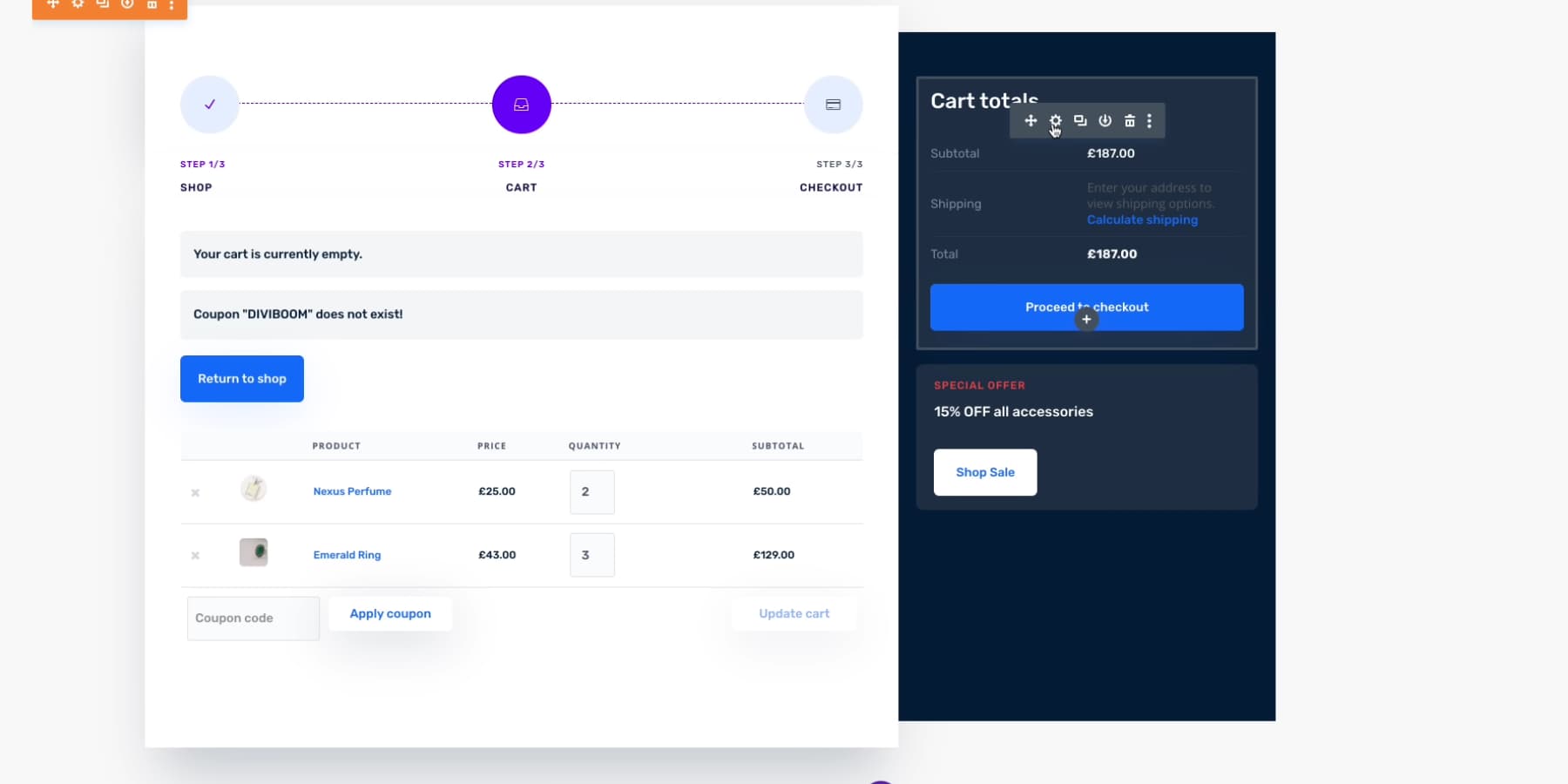
Divi also offers robust marketing features, such as A/B testing and complimentary access to promotional tools like Monarch and Bloom, to help boost sales. Moreover, with out-of-the-box integrations with 80+ services, you can also leverage various third-party marketing tools.
With an active community and a marketplace filled with extra modules and templates, Divi offers a versatile and comprehensive solution for all your eCommerce needs.
Other Key Features
Divi also includes these significant features:
- Diverse Modules such as Call to Action, Forms, Galleries, etc.
- Animations
- Scroll Effects and Motions
- Third-party ecosystem and integrations
- Bulk Editing
Oxygen’s Features
Oxygen offers numerous tools for designing and developing stunning, responsive websites with extensive customization options. Let’s take a look:
Drag and Drop Builder
Oxygen’s Drag and Drop Builder is an excellent tool for creating responsive web designs without coding. It’s easy to use, but knowing basic design and technical stuff can help. You can build web pages by dragging and dropping elements like text, images, and buttons. While it doesn’t have as many modules as Divi, it gets the job done for most use cases.
The builder also has a live preview, like Divi, so you can see your changes immediately. It also has a decent library of predesigned templates to help you get started, which we’ll cover later in this post. You can tweak everything — colors, fonts, styles — to match your brand perfectly.
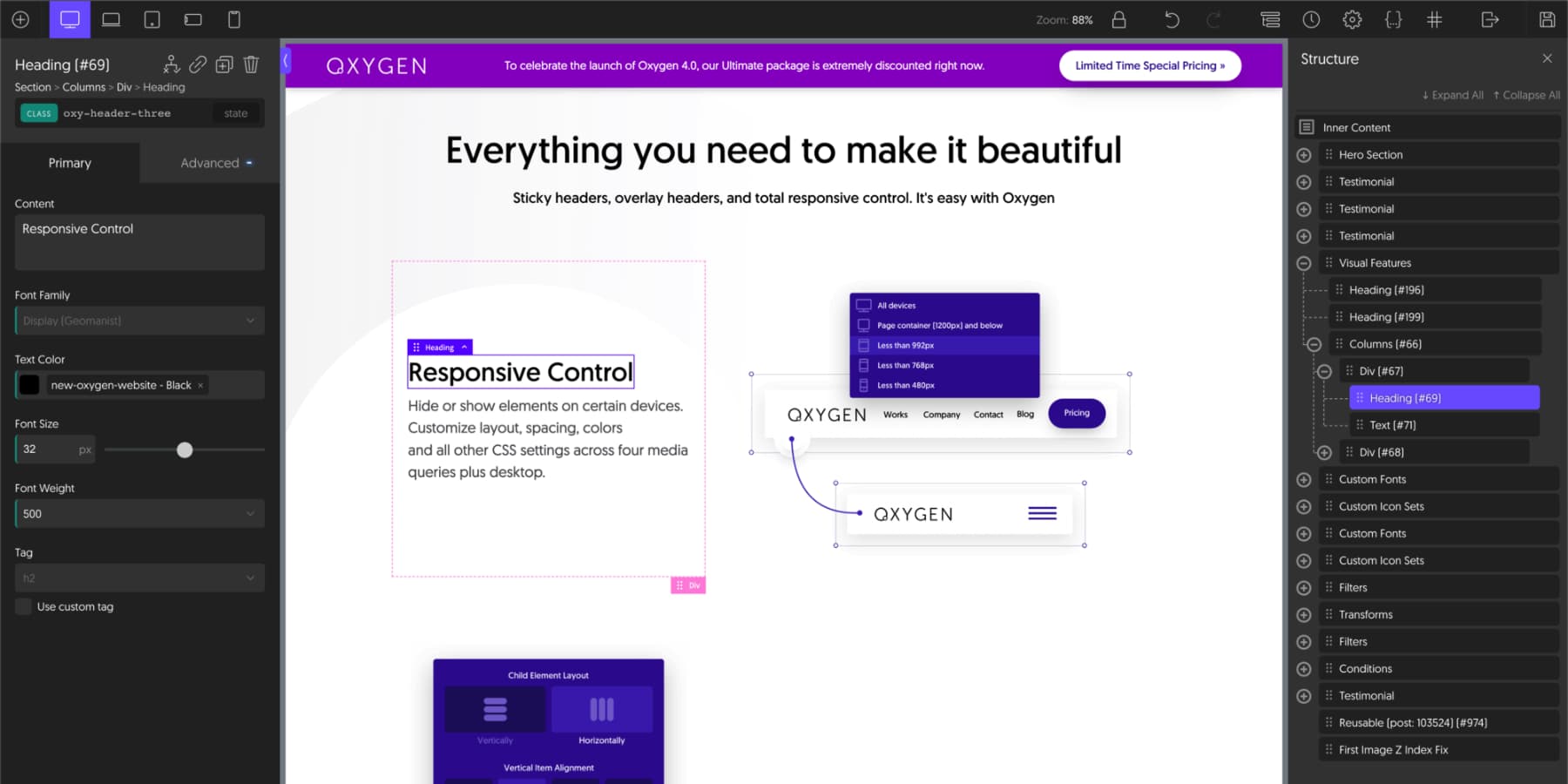
Overall, Oxygen’s Drag and Drop Builder is excellent for intermediate and experienced designers who want to create beautiful websites quickly and efficiently without compromising on the freedom coding provides. Oxygen currently doesn’t have any AI features, which might be disappointing since AI is becoming essential in web design. However, you can use services like GetGenie AI, which claims seamless integration with Oxygen Builder. These AI services only help you write content but not design entire pages, like Divi AI.
eCommerce Features
Oxygen Builder provides excellent tools for crafting attractive and functional eCommerce websites. Integrating smoothly with WooCommerce allows you to create custom product pages, shopping carts, and checkout processes that match your brand. The drag-and-drop interface lets you easily add product galleries, pricing tables, and other eCommerce features to your pages.
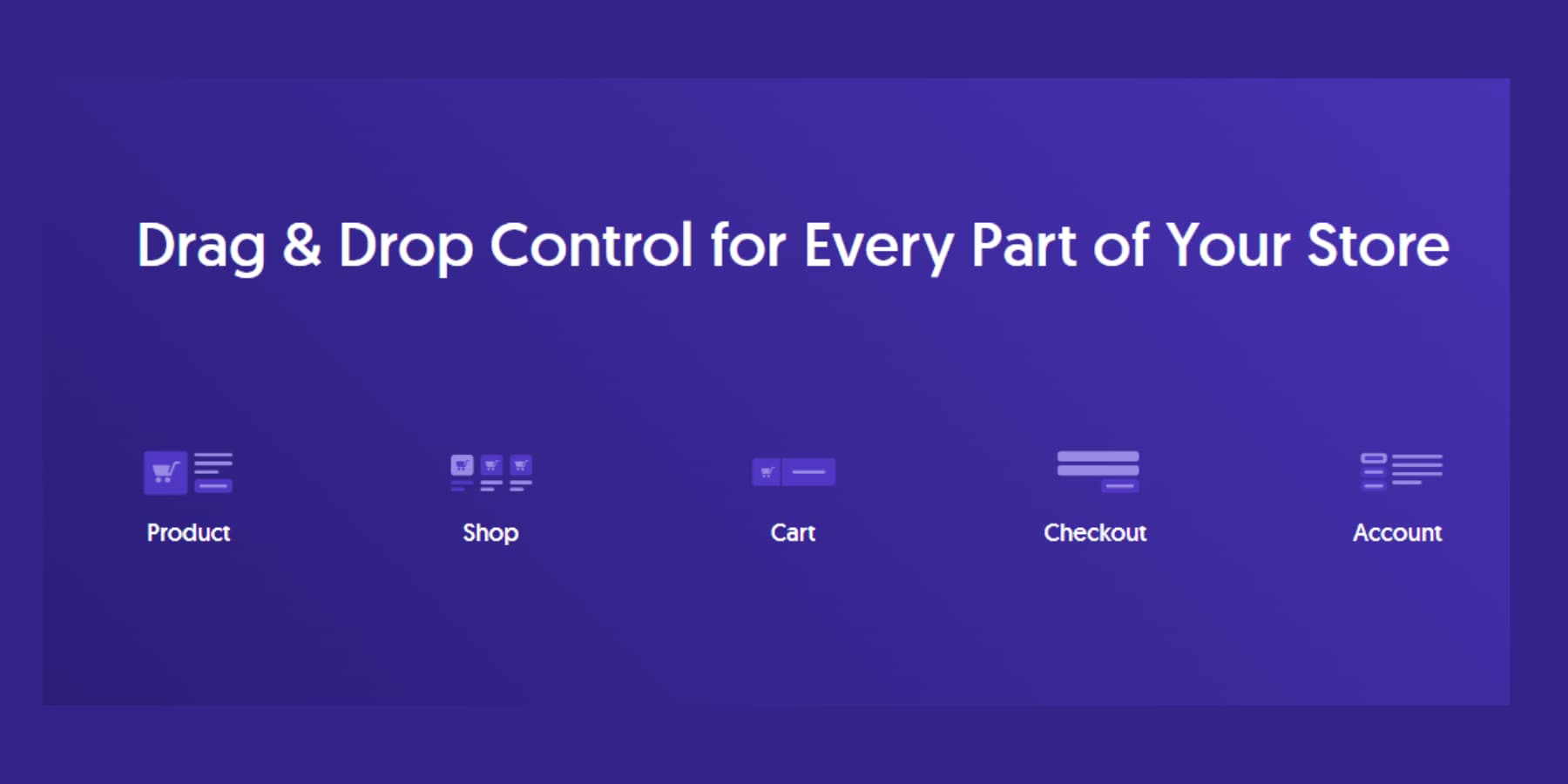
It also allows you to integrate dynamic data to show real-time product details and personalized content based on user preferences. With Oxygen’s global styling options, you can keep a consistent look throughout your online store. Oxygen’s performance enhancements ensure your WooCommerce site loads quickly, giving customers a seamless shopping experience.
Whether you’re setting up a small online shop or a large-scale eCommerce site, Oxygen Builder’s features make it a robust tool for building successful online stores.
Other Key Features
Some other important features of Oxygen are:
- Composite Elements
- Massive Dynamic Abilities
- Reusable Blocks
- Client Mode
- Gutenberg Integration
 |  |
|
|---|---|---|
| Features | 🥇 Winner When it comes to features, Divi definitely takes the crown. It offers a comprehensive drag-and-drop website builder packed with powerful tools and capabilities. Additionally, it provides the right amount of AI and marketing features that can greatly enhance your website building experience. | Oxygen Builder offers comprehensive page building capabilities for 2024, yet its marketing and AI features fall behind due to infrequent updates and a developer-centric approach. |
| Choose Divi | Choose Oxygen |
Divi vs Oxygen: Templates
Both platforms provide a wide range of predesigned templates in the Divi vs Oxygen comparison. However, their template options, design flexibility, and integration with their builders vary. Let’s take a closer look at what each platform offers regarding templates.
Divi’s Premade Layouts
Divi offers over 2000 layouts and more than 300 website layout packs crafted by professionals. These templates are optimized for both desktops and mobile devices, including smartphones and tablets. You can easily browse Divi’s design library with preset filters or use the search bar to find the perfect layout. The templates are organized by industry categories such as Art and Design, Business, Community and Non-Profit, and Education.
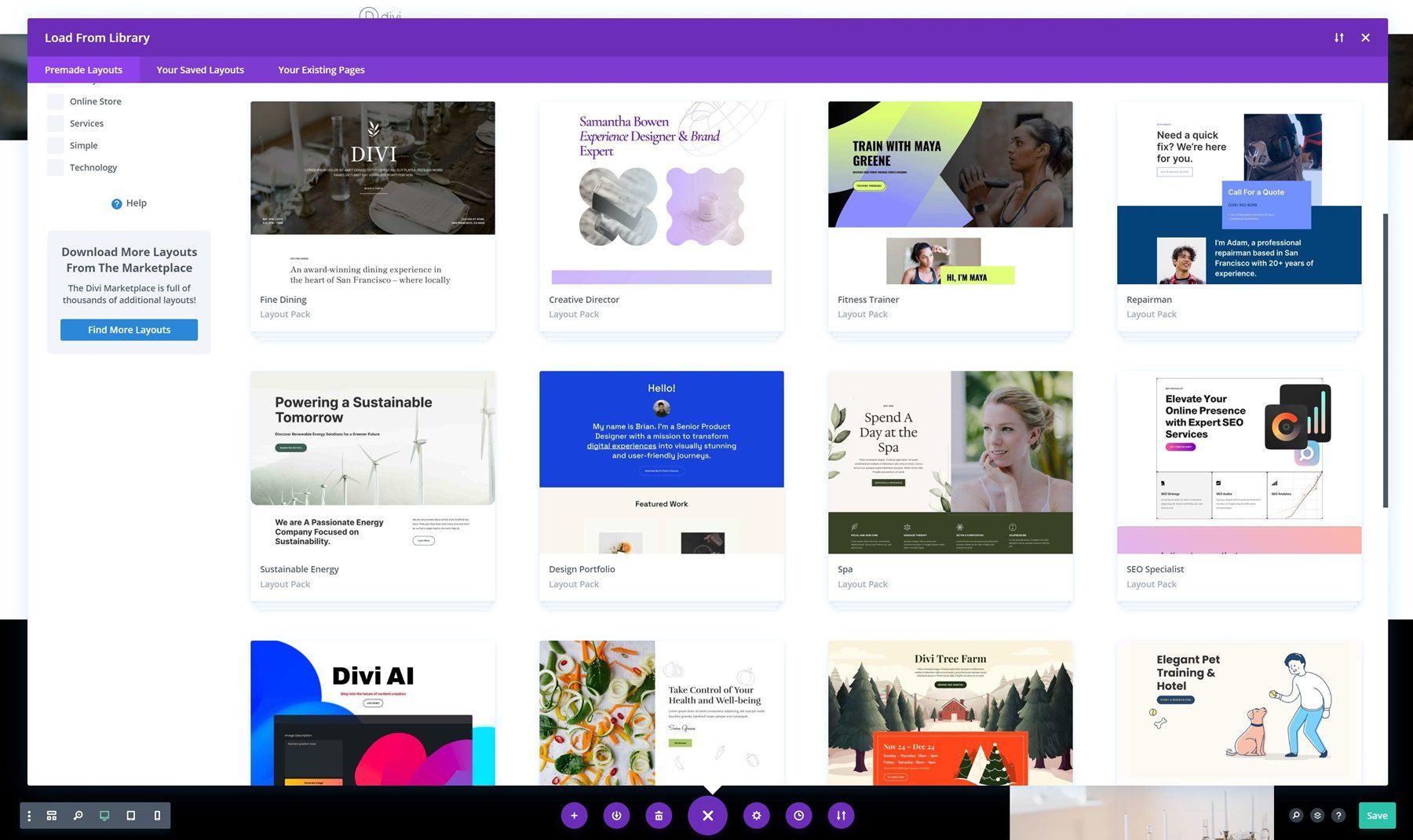
You won’t need to search far for your layouts; all designs are readily available within the Divi Builder. Moreover, With Divi AI, the design possibilities are endless, whether you want to modify existing layouts or create a unique website from scratch.
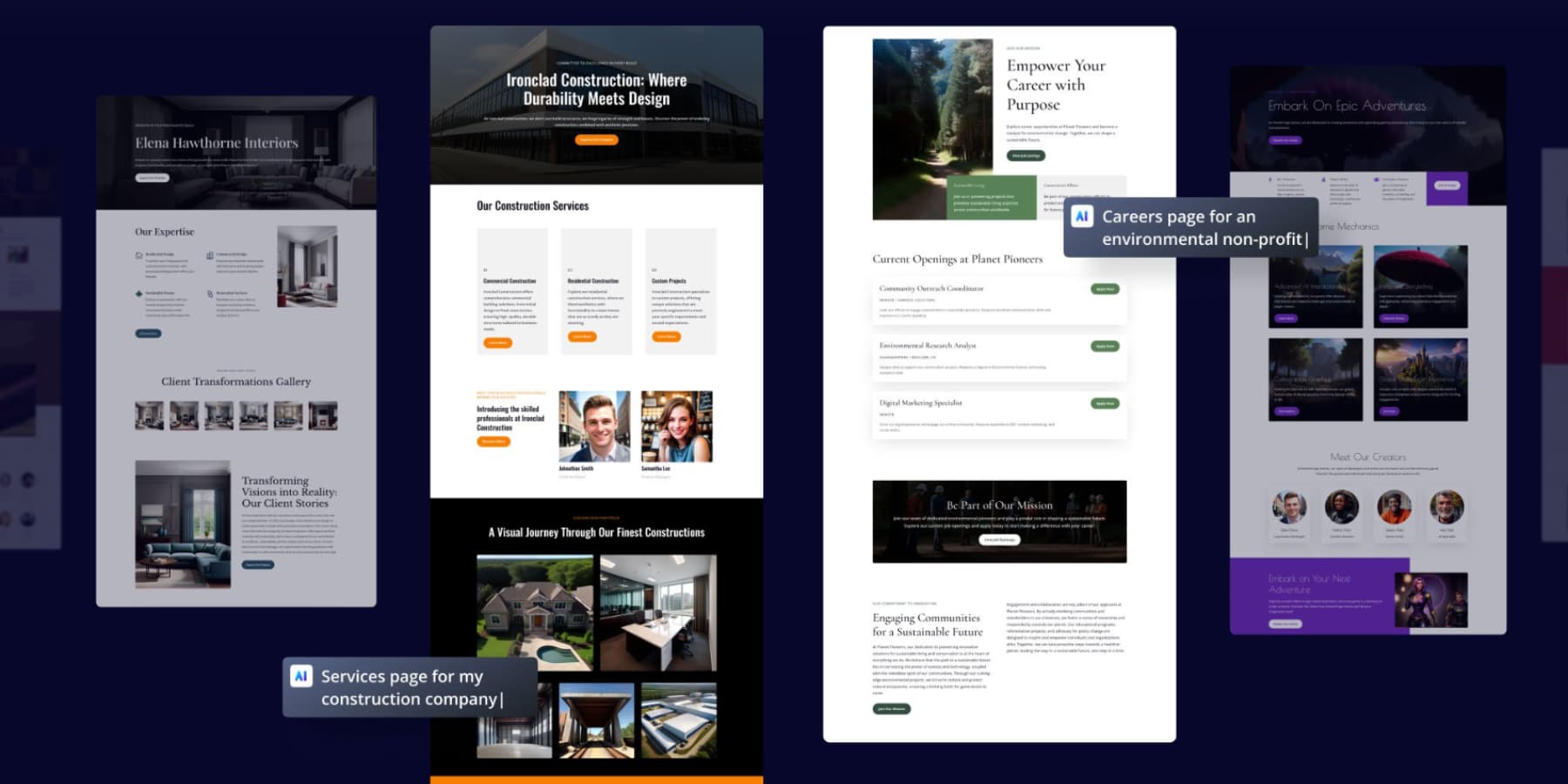
Additionally, a new layout or website pack is added to the library almost every week, increasing the chances of finding exactly what you’re looking for.
Oxygen Builder’s Templates
Oxygen’s design library may seem pale, especially compared with the massive numbers and options available with Divi. This might make sense since Oxygen seems aimed more at self-starters and DIY fans.
Currently, Oxygen Builder has around 15 starter templates, or Design Sets, as they call them. These might appear outdated and could need some refreshing and retouching before going live. The Design Sets cover various industries, such as marketing agencies, wineries, finance, freelancing, music, weddings, and more.
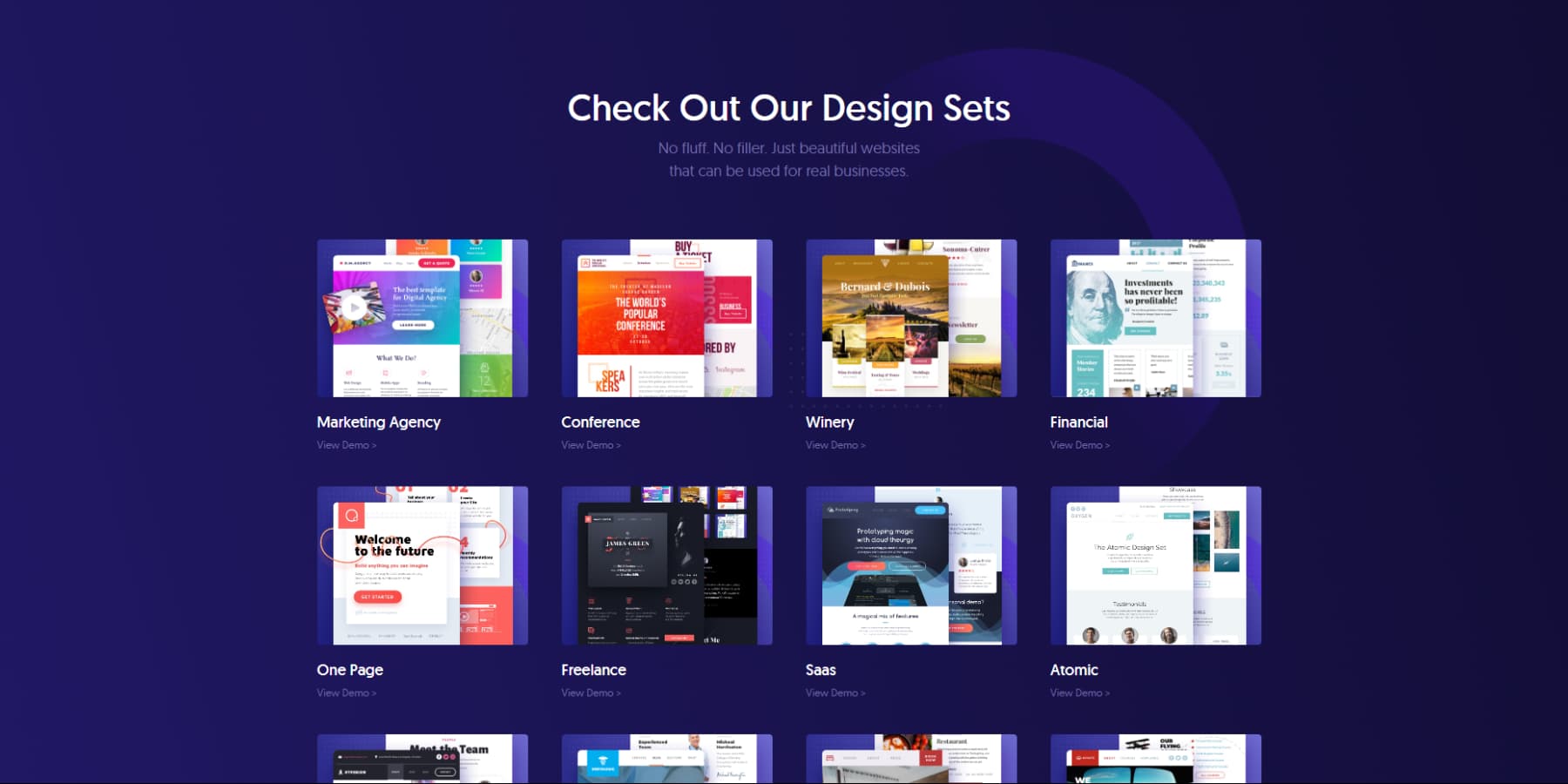
Also, do note that Oxygen Builder doesn’t include any AI features. You’ll need to generate design improvements or ideas on your own. These limitations severely limit the usability of the otherwise formidable platform, particularly to those who aren’t that creatively gifted.
 |  |
|
|---|---|---|
| Templates | 🥇 Winner This is an easy win for Divi as it offers over 2000 free layouts out of the box, with new ones added almost weekly. If the provided layouts don't meet your needs, you can create an entire website using AI by describing your desired design, or search for numerous third-party templates that are available on the marketplace. | Oxygen Builder offers a limited set of around 15 design templates, which pales in comparison to Divi's extensive library. Furthermore, lacking AI features, a slightly dated design, and room for ecosystem improvement, Oxygen Builder falls short when compared to Divi. |
| Choose Divi | Choose Oxygen |
Divi vs Oxygen: Learning Curve
Ease of use is crucial when picking a website builder. Divi and Oxygen both promote user-friendliness but use different methods. Let’s compare how easy Divi vs Oxygen is to use.
Divi: Ease of Use
This section will explore how easy Divi is to use and the overall experience it provides.
Editor
Divi’s interface makes web design using WordPress a joy. Build your web page using sections, rows, and modules. Just drag, drop, resize, and reposition elements until everything looks perfect. Divi’s vast library of predesigned layouts, sections, and modules, accessible with only one click, caters to all kinds of websites, so you’ll never have to start from scratch.
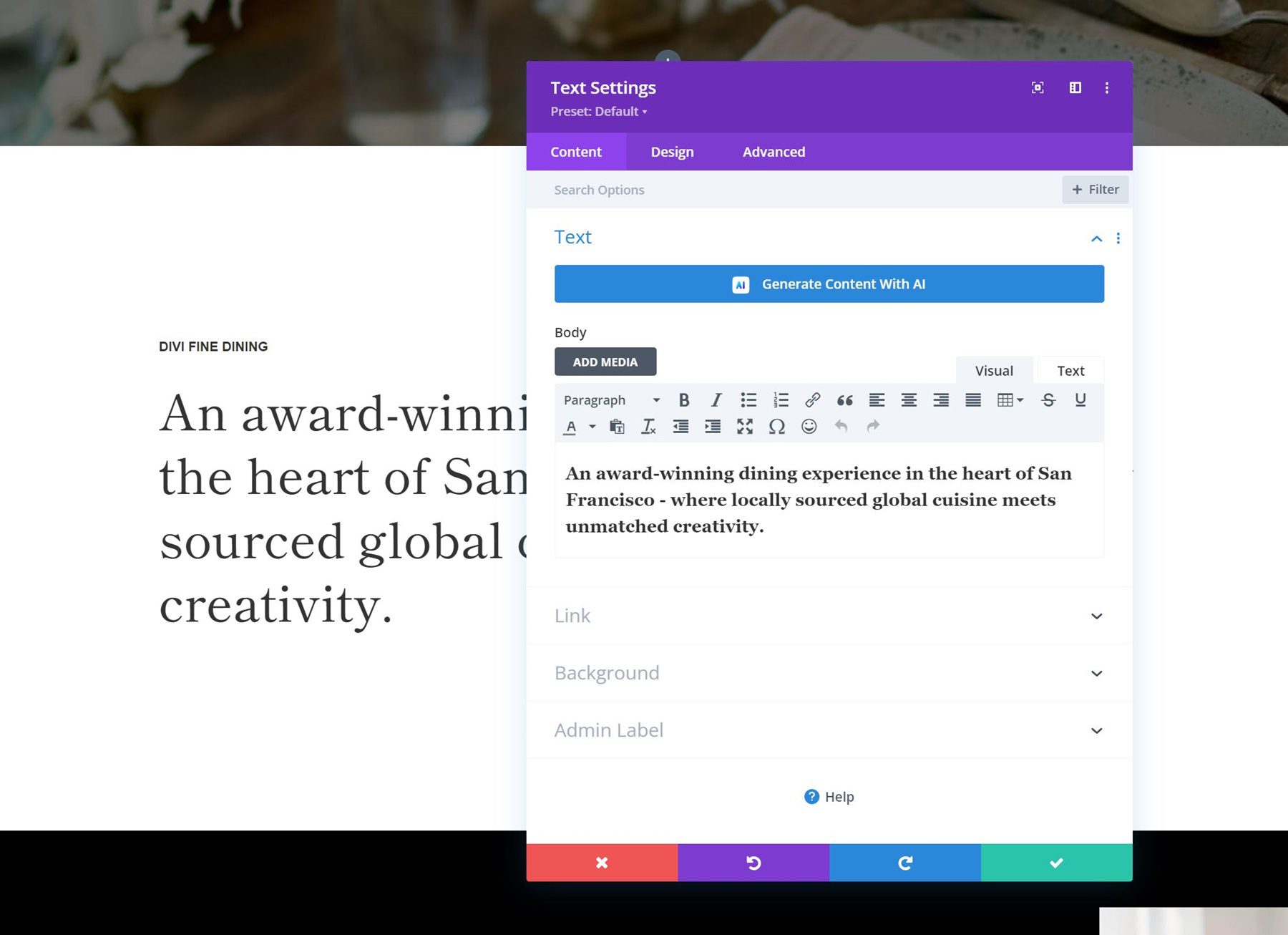
You can effortlessly fine-tune every detail of your design. You have control, from adjusting global layout and style through Page Settings to managing details for Sections, Rows, Columns, and individual Modules. Plus, features like Undo/Redo, Save to Library, and responsive Preview Modes make your workflow smooth and efficient, allowing you to create designs that easily reflect your unique vision.
Divi’s interface stands out with its unique feature of non-intrusive, space-efficient options. They remain hidden until you click on them, allowing you to concentrate solely on designing your website without any distractions.
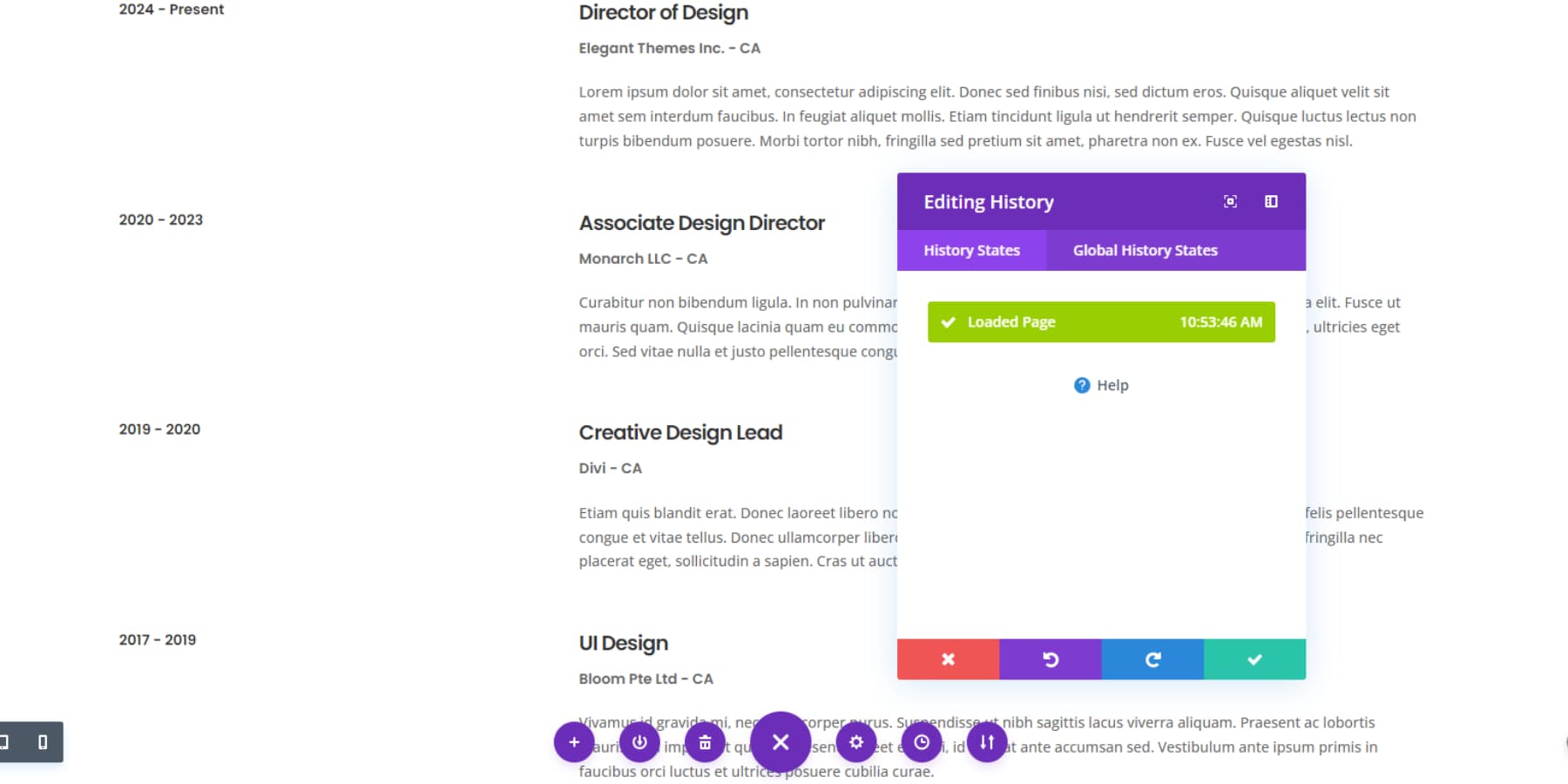
Add Divi’s helpful AI to this equation, which can help you modify these sections and even create entire websites from scratch. You need to perfect your prompt and be as descriptive as possible.
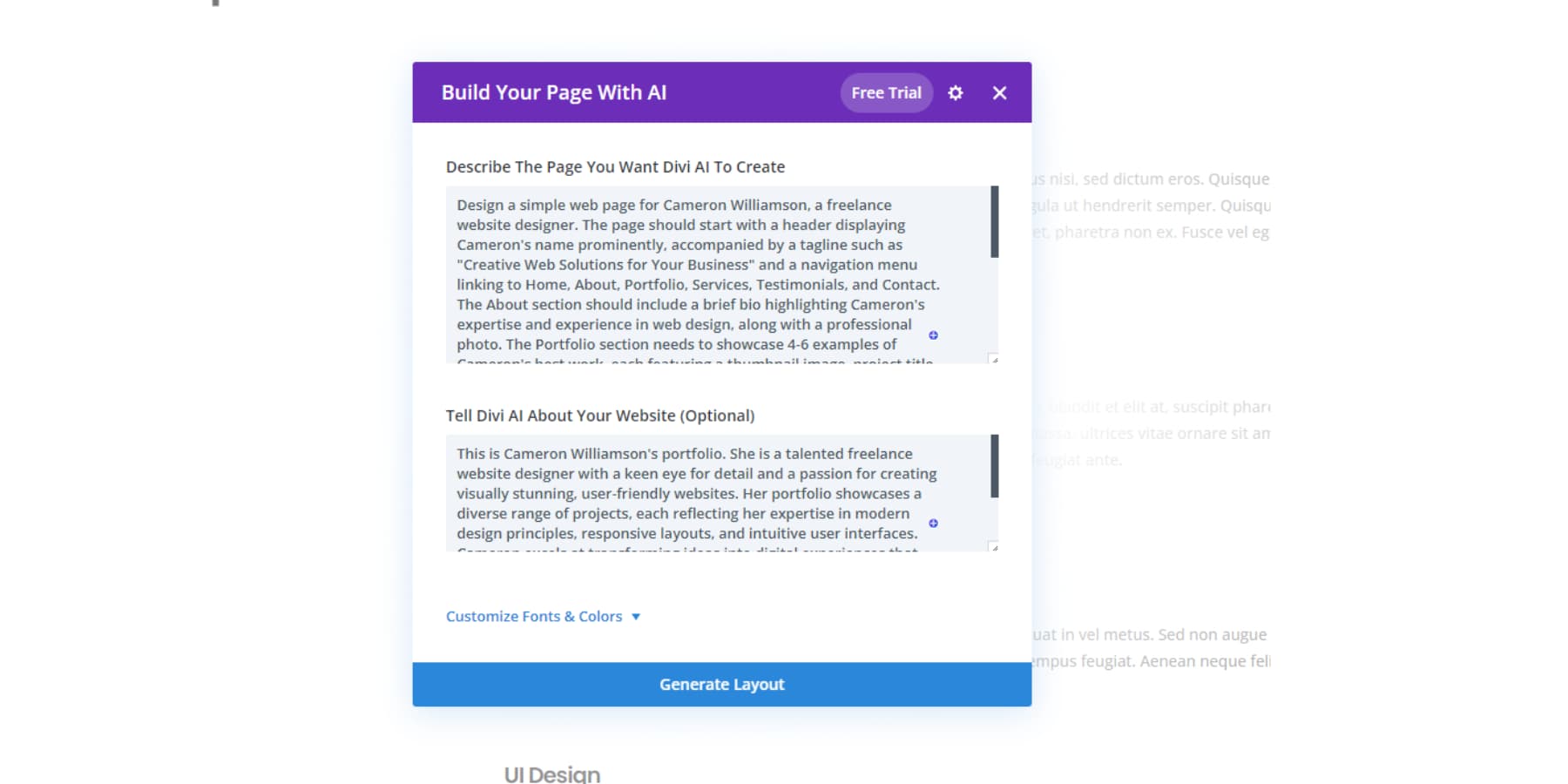
It might take a day or two to master, but Divi’s interface strikes the perfect balance between power and simplicity. Beginners and pros can craft stunning, functional websites without wrestling with code. And wherever custom code might be necessary, you can always rely on Divi AI.
Customization
With Divi’s powerful customization settings, you can granularly tailor every aspect of your website’s design. The settings panel gives you quick access to customization options, the styling controls let you tweak every tiny detail to your heart’s content. You can easily adjust module dimensions, spacings, colors, and styles, as well as section backgrounds, padding, and layouts. The Visual Builder is the star of the show, letting you edit your site live on the front end. No more switching back and forth between editing and previewing—your changes appear instantly.
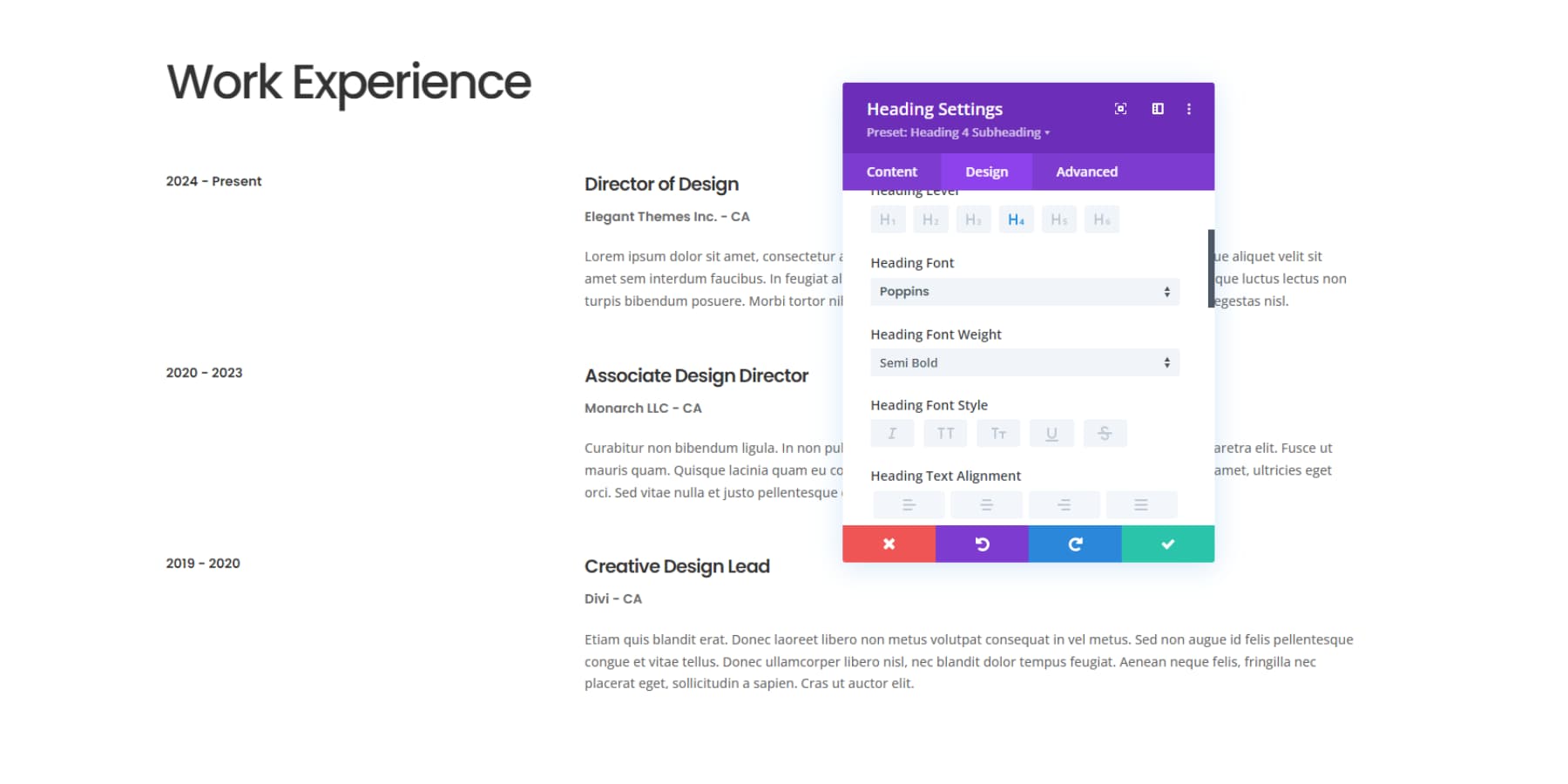
You can even leverage advanced settings like hover styles, filters, animations, and scroll effects.
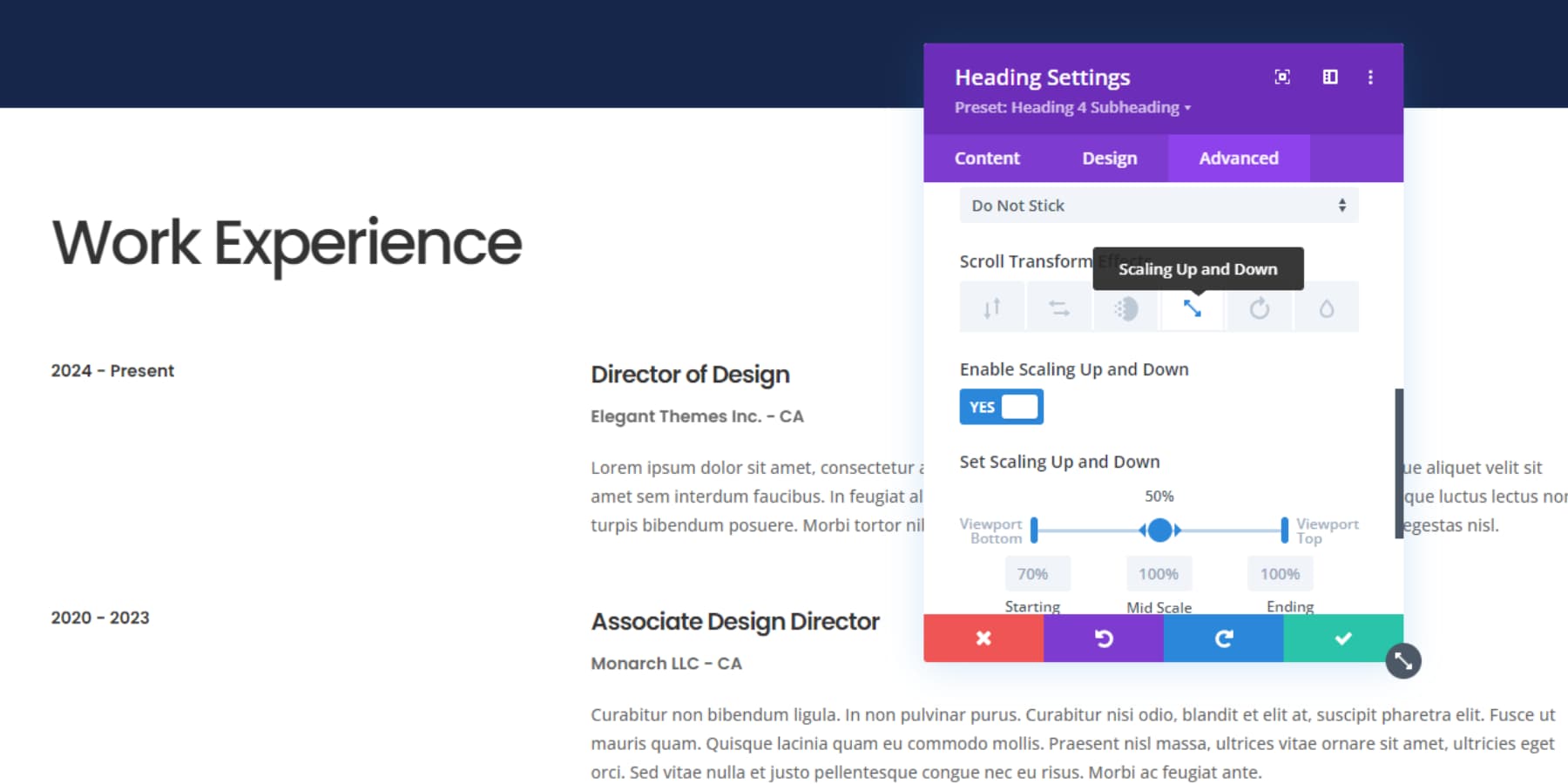
Divi’s visual builders and intuitive options make it simple to create pixel-perfect designs without touching code. Using Divi’s theme builder, you can tweak global elements like headers, footers, typography, and spacing for cohesive branding across all pages.
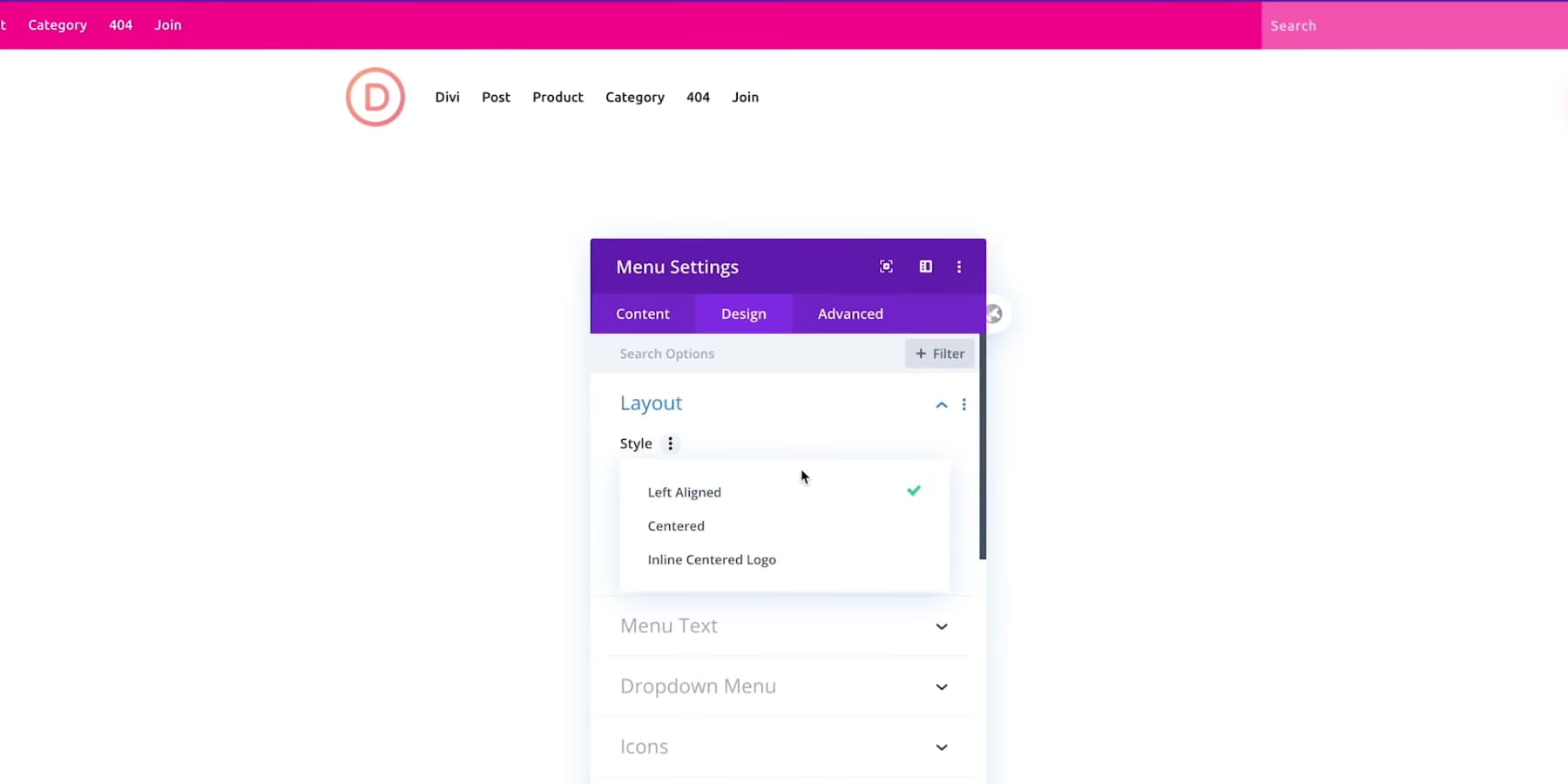
The responsive editing mode ensures your site looks flawless on any device. Desktop, tablet, or mobile visitors will all have a seamless experience.
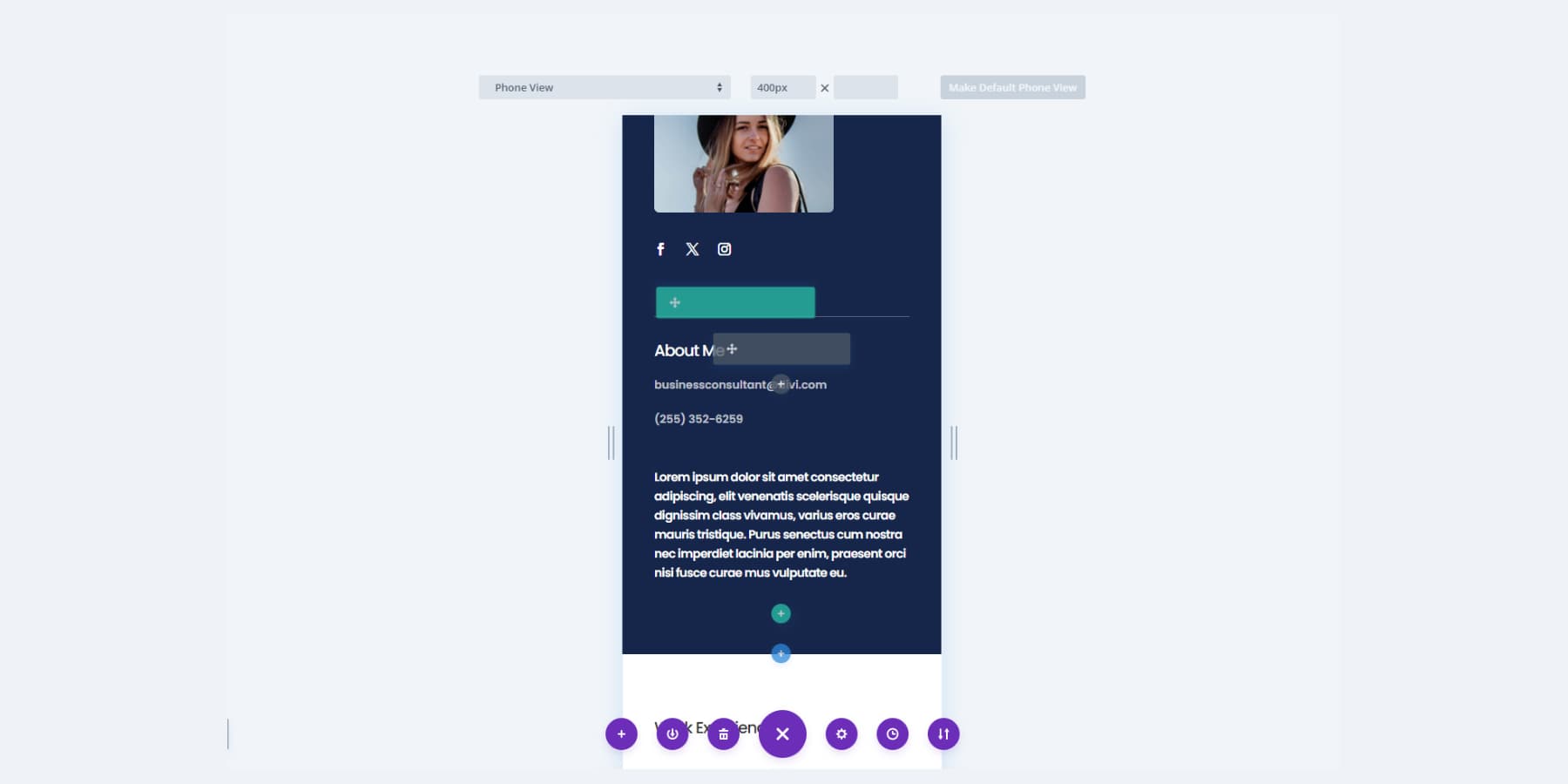
Overall Ease of Use
Divi’s learning curve is straightforward and more intuitive, although you have to give yourself some time to absorb its interface. Thanks to its community, YouTube tutorials, and extensive documentation, you can understand it more easily and get started much faster with thousands of premade templates and AI features.
Oxygen: Ease of Use
In the following section, we’ll dissect how user-friendly Oxygen is and discuss its general user experience.
Editor
Oxygen Builder is a strong visual website builder for WordPress with an easy-to-use interface. Its drag-and-drop feature effortlessly creates custom website designs, even if you don’t know how to code. However, it isn’t as straightforward as Divi. While coding isn’t required, having some design and technical skills can make your learning process much quicker.
Oxygen Builder’s interface is split into different sections. The main canvas area is where you visually design and arrange elements on your website. On the left, the sidebar gives you access to various design elements like headers, footers, sections, and content blocks. The top toolbar helps you save, preview, and publish your website and access global settings and advanced features.
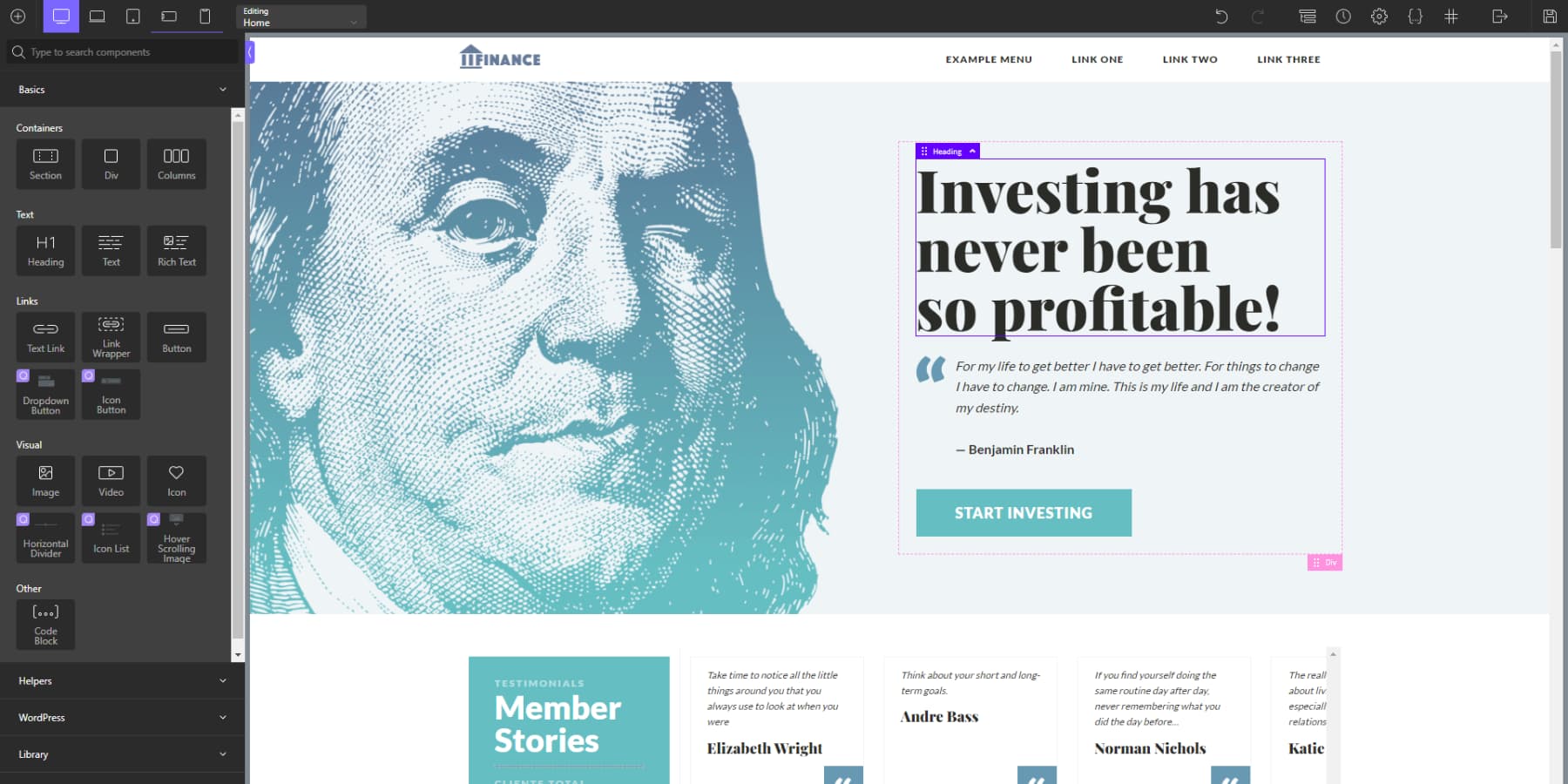
Customization
Just like Divi, Oxygen Builder allows for real-time editing. This means you can instantly see any changes you make without constantly refreshing or switching views. This dramatically improves your user experience and makes the design process smoother. However, the left sidebar might cause some differences in design.
Oxygen Builder provides granular control over customizing every aspect of your website design. Using the settings, you can modify the styling of any element or section to tweak typography, colors, spacing, borders, and more. You can even set classes to each element, edit it based on its CSS state, and enable dynamic visibility.
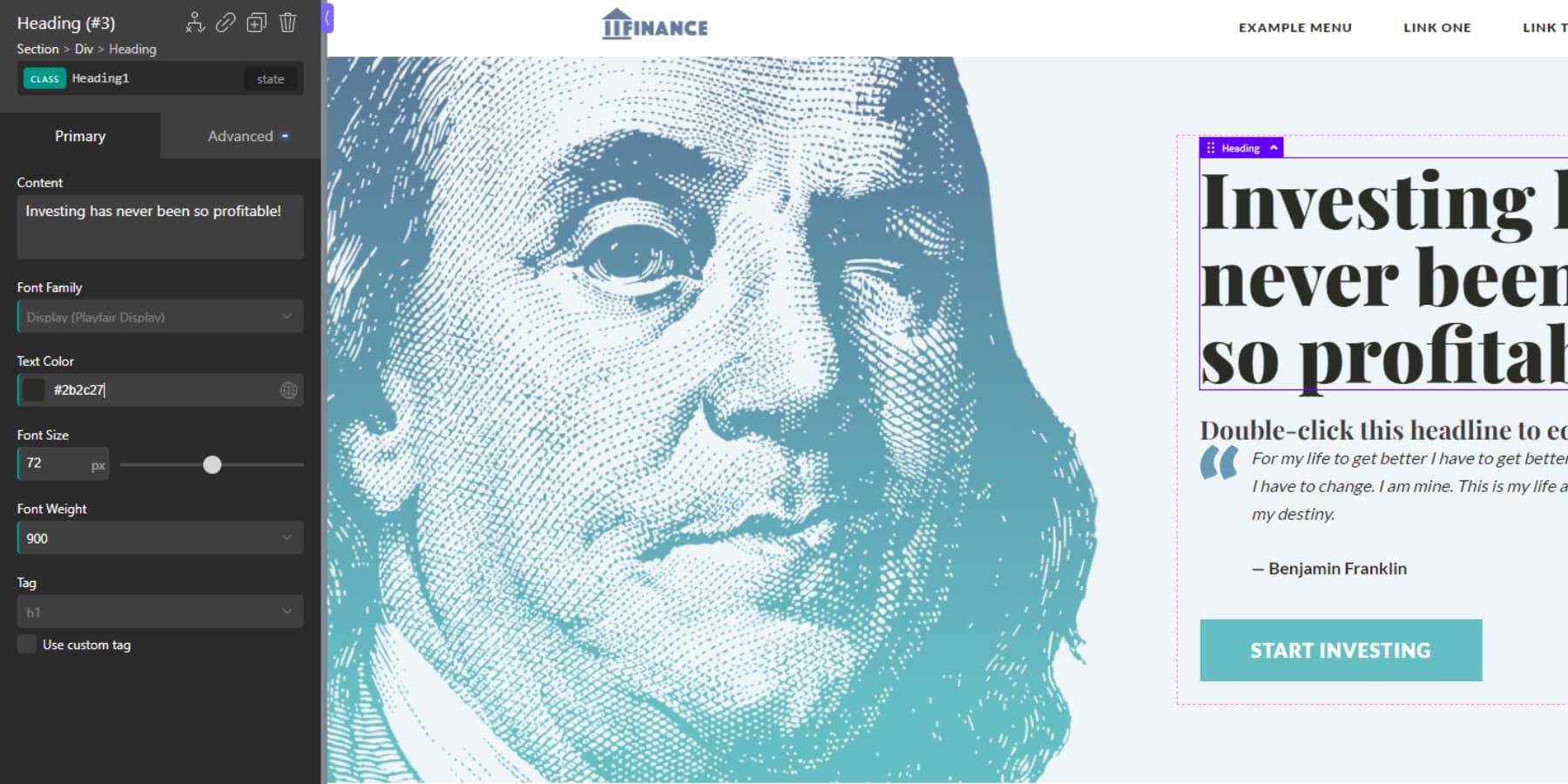
Advanced options let you animate elements, apply hover effects, and apply custom CSS or JavaScript.
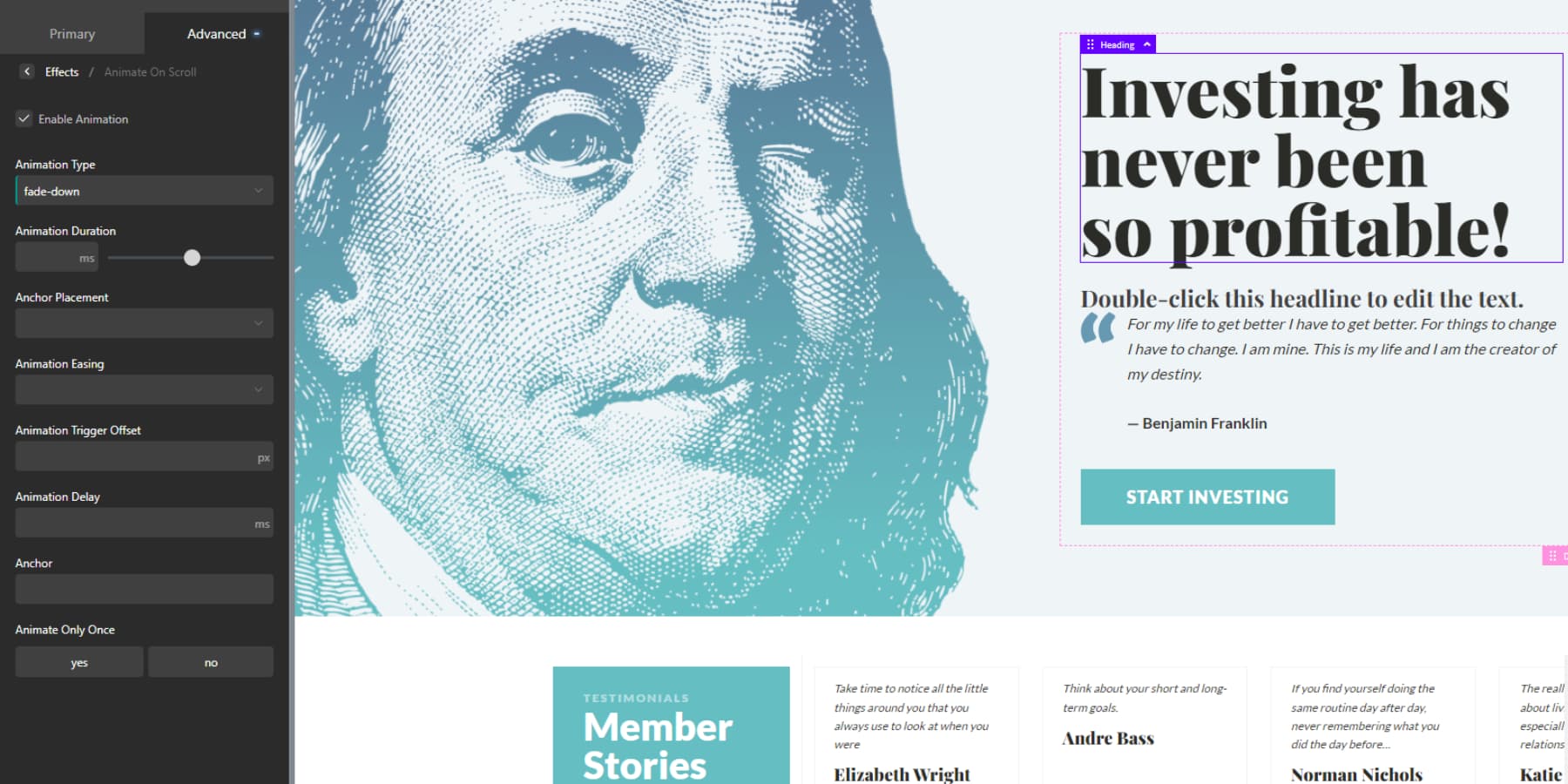
The interface also includes a responsive design mode, letting you preview and adjust your website’s layout for different screen sizes and devices. Overall, Oxygen Builder’s interface is meant to be intuitive, efficient, and highly customizable, enabling you to create stunning, bloat-free websites.
Overall Ease of Use
Oxygen Builder can be more challenging to learn than Divi because it allows for more advanced customizations and requires knowledge of HTML, CSS, and JavaScript. However, its visual interface and thorough documentation make it easier than starting from scratch with code. This way, you get a good mix of flexibility and user-friendliness for building websites.
 |  |
|
|---|---|---|
| Ease of Use | 🥇 Winner With AI features, organized options and editor layout, extensive YouTube tutorials, comprehensive documentation, and robust community support, Divi emerges as the clear winner over Oxygen Builder in the ease of use department as well. | While not that difficult to get started, Oxygen Builder is currently behind Divi's user interface, AI features, and overall community factor. |
| Choose Divi | Choose Oxygen |
Divi vs Oxygen: Pricing
Cost is often another critical factor when picking a website builder. Here, we’ll compare the pricing plans and value Divi vs Oxygen offers to help you decide which platform provides the most bang for your buck when building a website.
Divi’s Pricing
Divi does not provide a free version of its plugin. But, we do present a 30-day refund policy, no questions asked. Let’s discuss the pricing plans that are offered:
Divi
The Divi plan offers a fantastic deal starting at just $89 annually. With this plan, you unlock a treasure trove of 2000+ layouts, all features of the powerful website builder, comprehensive documentation, reliable support, and the freedom to use it on as many websites as you like – whether they’re your personal projects or designs for clients. But wait, there’s more! You also receive the Bloom email opt-in plugin, the Monarch social media sharing plugin, and the Extra theme at no extra charge!
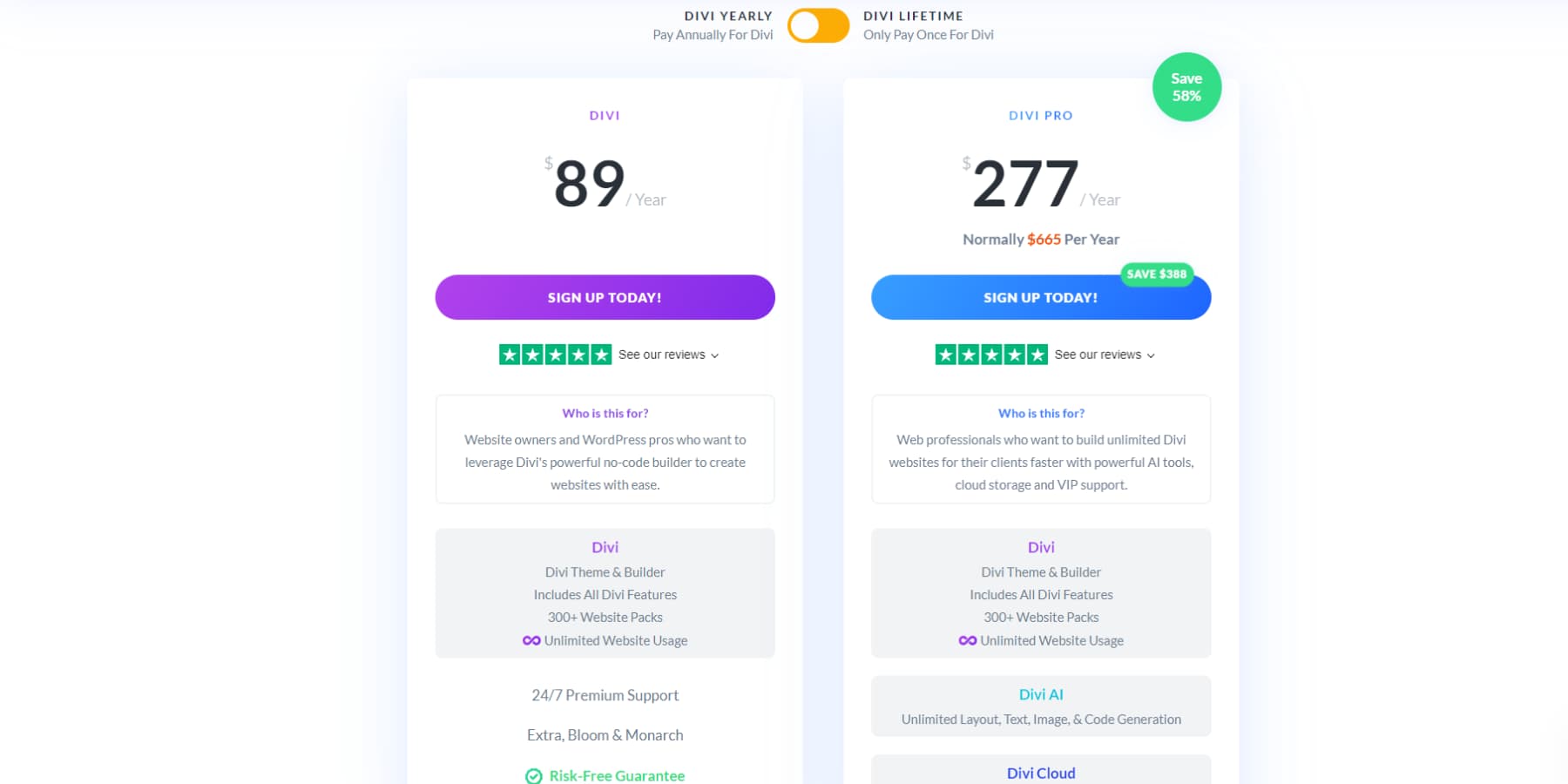
And if yearly payments aren’t your thing, you can snag all these fantastic benefits for a single flat fee of $249!
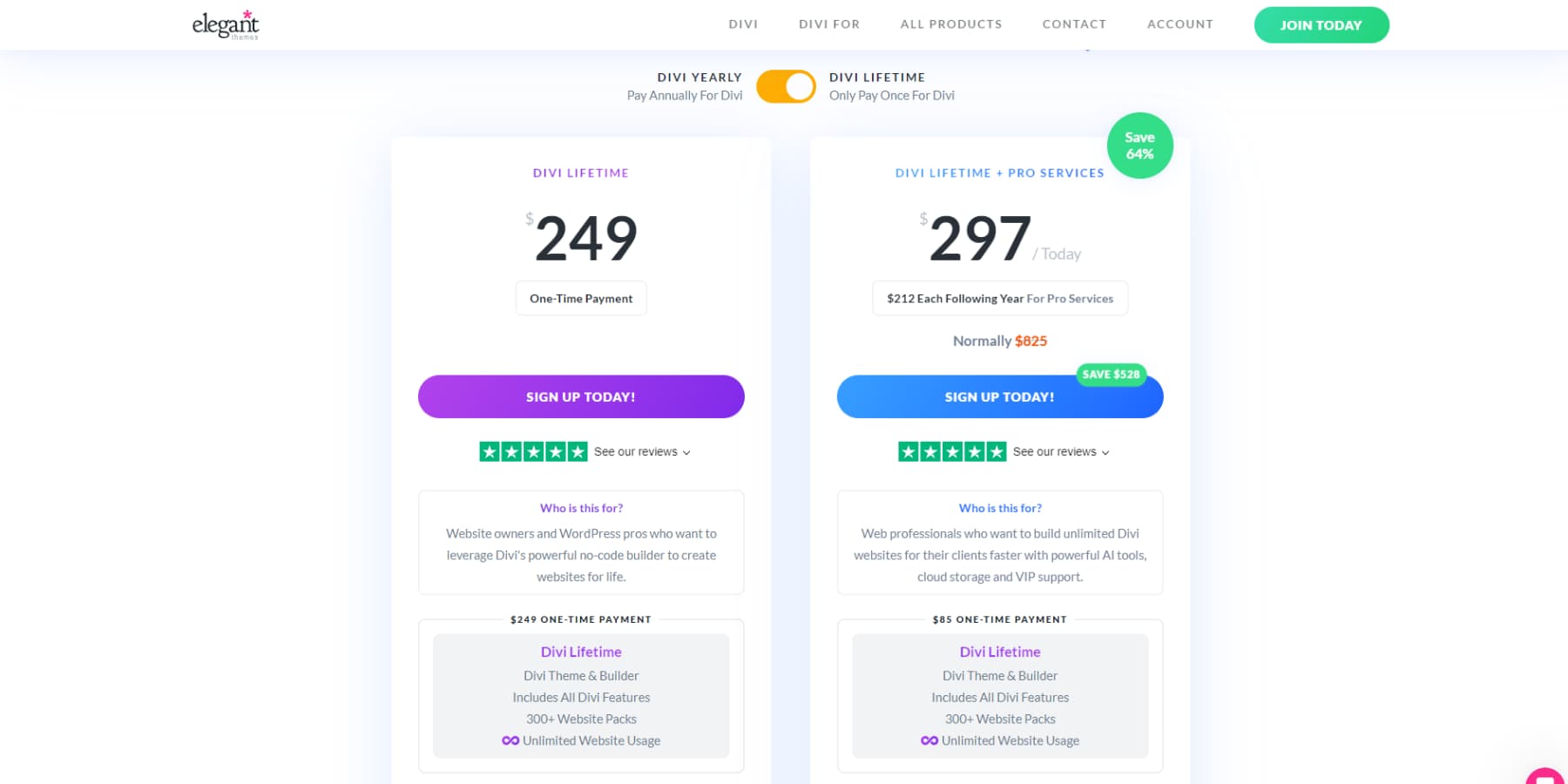
Divi Pro
The Divi Pro plan is a recommended upgrade tailored for website agencies. In addition to the features listed earlier, this plan offers unlimited use of Divi AI, access to Divi Cloud – unlimited storage for your Divi assets, VIP support, and the option to invite up to 4 team members to collaborate with you. All of this is yours for $277 per year or with a one-time $85 fee for Divi and an annual recurring payment of $212 for the additional features.
Oxygen’s Pricing
Oxygen Builder operates on a one-time payment model (soon to be changed), and as such, it doesn’t provide a free version. Now, let’s break down the pricing plans that Oxygen has to offer:
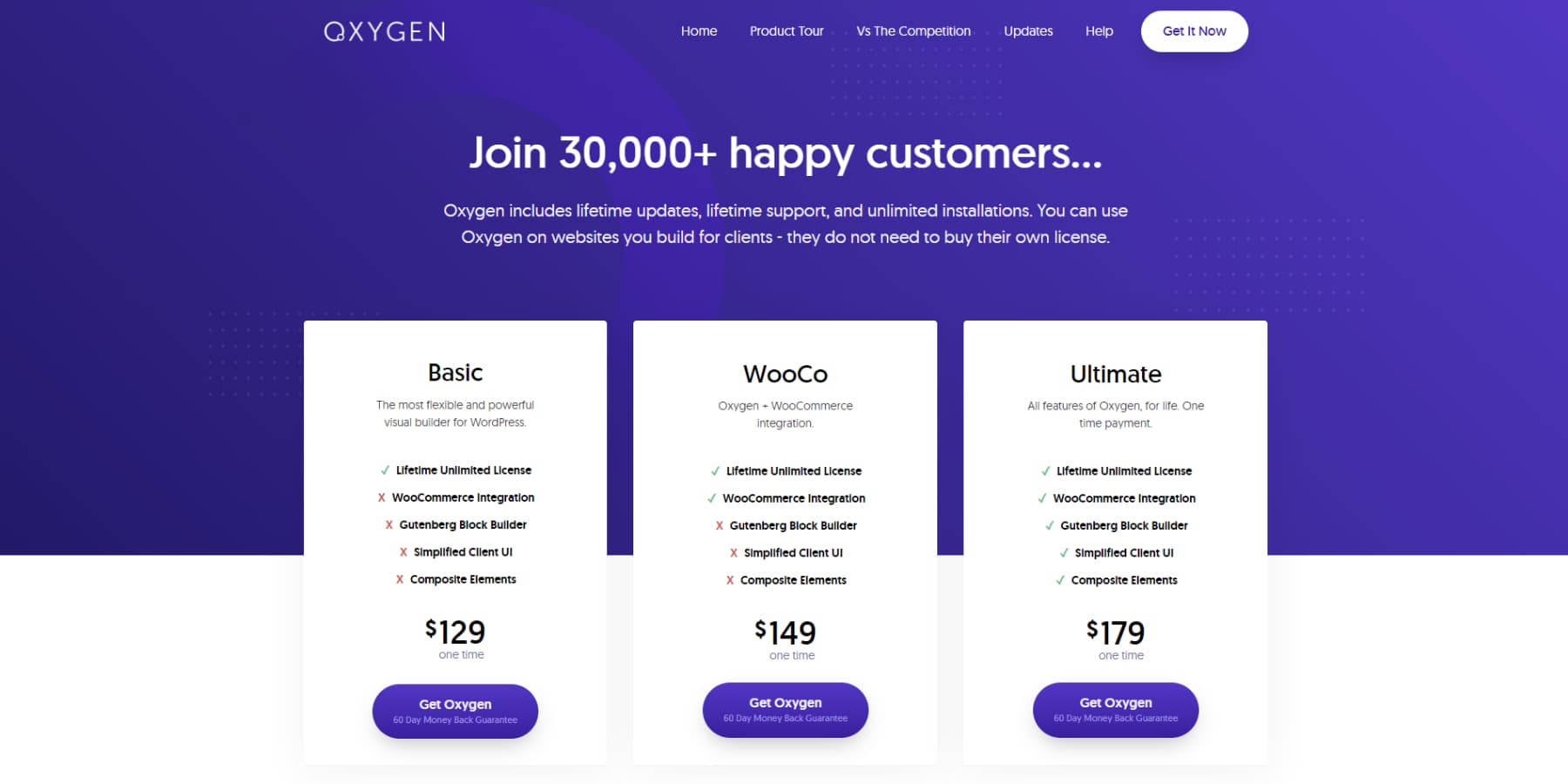
Basic
The entry-level Basic plan at $129/one-time provides access to the website builder, support, templates, and documentation. With this plan, you can use the license on unlimited websites. However, it does not include the ability to create eCommerce websites using WooCommerce, access to the Gutenberg Builder or Simplified Client interface, or access to the Composite Elements package, which offers additional elements like Dynamic Slider, Image Comparison, and Mega Menu. However, the package is available at an extra cost of $29/yr. This plan suits those who want to create simple websites without advanced design or eCommerce features.
WooCo
The WooCo plan includes all the abovementioned features and limitations but allows you to create WooCommerce websites. It is priced at $149, a one-time payment. If you want to create a simple eCommerce website, this plan is best suited for your needs.
Ultimate
The Ultimate plan, priced at $179, offers complete access to all features with no limitations. It also includes lifetime access to the Composite Elements package. This plan is best suited for creating complex websites, including intricate eCommerce websites.
 |  |
|
|---|---|---|
| Pricing | 🥇 Winner While it's a close call, Divi holds an advantage in pricing with a lower entry point, all features included in any package, free marketing plugins, and thousands of pre-included layouts. All while enabling you to use Divi on unlimited sites, personal or client's, without additional charges. | Like Divi, Oxygen allows unlimited website usage and offers a one-time payment option. However, it falls behind as certain features like WooCommerce integration and additional elements require higher-tier plans. It also has a higher starting price point. |
| Choose Divi | Choose Oxygen |
Divi vs Oxygen: Who’s the Winner?
Divi and Oxygen provide website-building tools tailored to various user needs. This part compares the advantages and disadvantages of each platform, guiding you to figure out which one aligns best with your unique needs, skill level, and project objectives.
Go With Divi If…
… you’re new to web design and have little to no coding or limited design experience. You can create beautiful websites without advanced skills with Divi’s drag-and-drop builder and predesigned layouts. You can also enjoy extensive customization options and AI features. Our support team is highly rated and frequently praised in testimonials, providing reliable assistance whenever needed.
Pros Of Divi👍🏾
- Drag and drop interface for easy website building
- A vast library of pre-built layouts and templates
- Highly customizable with numerous design options
- Free Access to essential marketing plugins like Bloom and Monarch
- Regular updates and excellent support from Elegant Themes
Cons Of Divi 👎🏾
- It still relies on shortcodes (which are being phased out)
- Potential performance issues with excessive customization
Go With Oxygen If…
… you’re comfortable with coding, have some design skills, and require advanced customization. Oxygen Builder provides the perks of designing a website with a visual, drag-and-drop interface while allowing you to edit HTML, CSS, and JavaScript directly. This makes it ideal for developers and designers who want maximum flexibility and creative freedom.
Pros Of Oxygen👍🏾
- Clean, lightweight code for better performance
- Highly flexible with extensive customization options
- Complete control over HTML, CSS, and JavaScript for advanced customization
- Inline code editing with syntax highlighting
- Version control and revision history
Cons Of Oxygen👎🏾
- Limited built-in design elements
- Slow update cycles
- Steeper learning curve compared to Divi
 |  |
|
|---|---|---|
| Features | 🥇 Winner When it comes to features, Divi definitely takes the crown. It offers a comprehensive drag-and-drop website builder packed with powerful tools and capabilities. Additionally, it provides the right amount of AI and marketing features that can greatly enhance your website building experience. | Oxygen Builder offers comprehensive page building capabilities for 2024, yet its marketing and AI features fall behind due to infrequent updates and a developer-centric approach. |
| Templates | 🥇 Winner This is an easy win for Divi as it offers over 2000 free layouts out of the box, with new ones added almost weekly. If the provided layouts don't meet your needs, you can create an entire website using AI by describing your desired design, or search for numerous third-party templates that are available on the marketplace. | Oxygen Builder offers a limited set of around 15 design templates, which pales in comparison to Divi's extensive library. Furthermore, lacking AI features, a slightly dated design, and room for ecosystem improvement, Oxygen Builder falls short when compared to Divi. |
| Ease of Use | 🥇 Winner With AI features, organized options and editor layout, extensive YouTube tutorials, comprehensive documentation, and robust community support, Divi emerges as the clear winner over Oxygen Builder in the ease of use department as well. | While not that difficult to get started, Oxygen Builder is currently behind Divi's user interface, AI features, and overall community factor. |
| Pricing | 🥇 Winner While it's a close call, Divi holds an advantage in pricing with a lower entry point, all features included in any package, free marketing plugins, and thousands of pre-included layouts. All while enabling you to use Divi on unlimited sites, personal or client's, without additional charges. | Like Divi, Oxygen allows unlimited website usage and offers a one-time payment option. However, it falls behind as certain features like WooCommerce integration and additional elements require higher-tier plans. It also has a higher starting price point. |
| Choose Divi | Choose Oxygen |
Divi and Oxygen are excellent for website building but serve different purposes. If you want a straightforward design process with some help from AI, Divi is your best bet. On the other hand, if you need more control over your design, Oxygen is the better choice.
Can’t decide? Give both a try. Even though neither platform is free, they offer a money-back guarantee with no questions asked. Just sign up with your email and test their features without commitment.

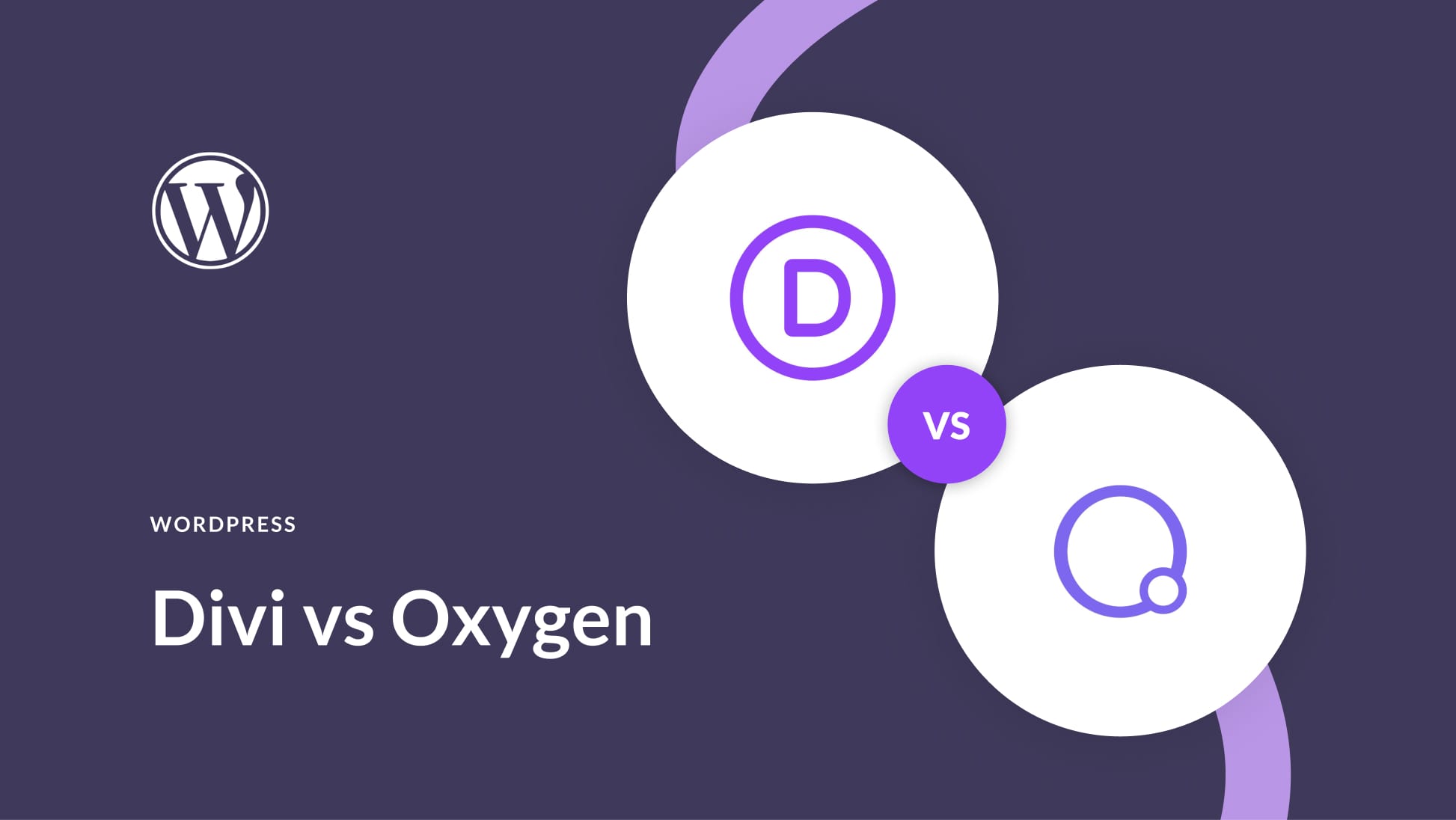
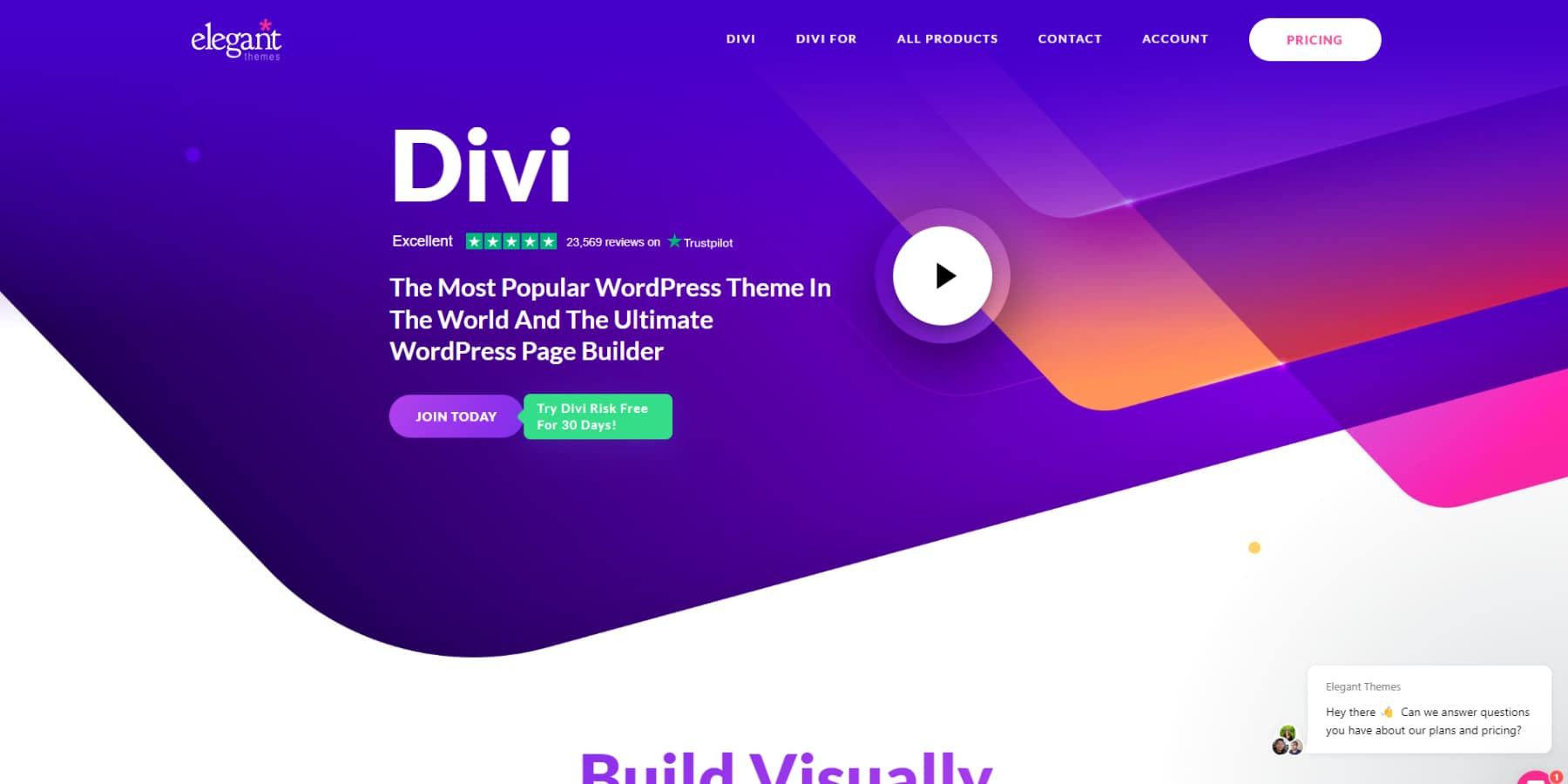





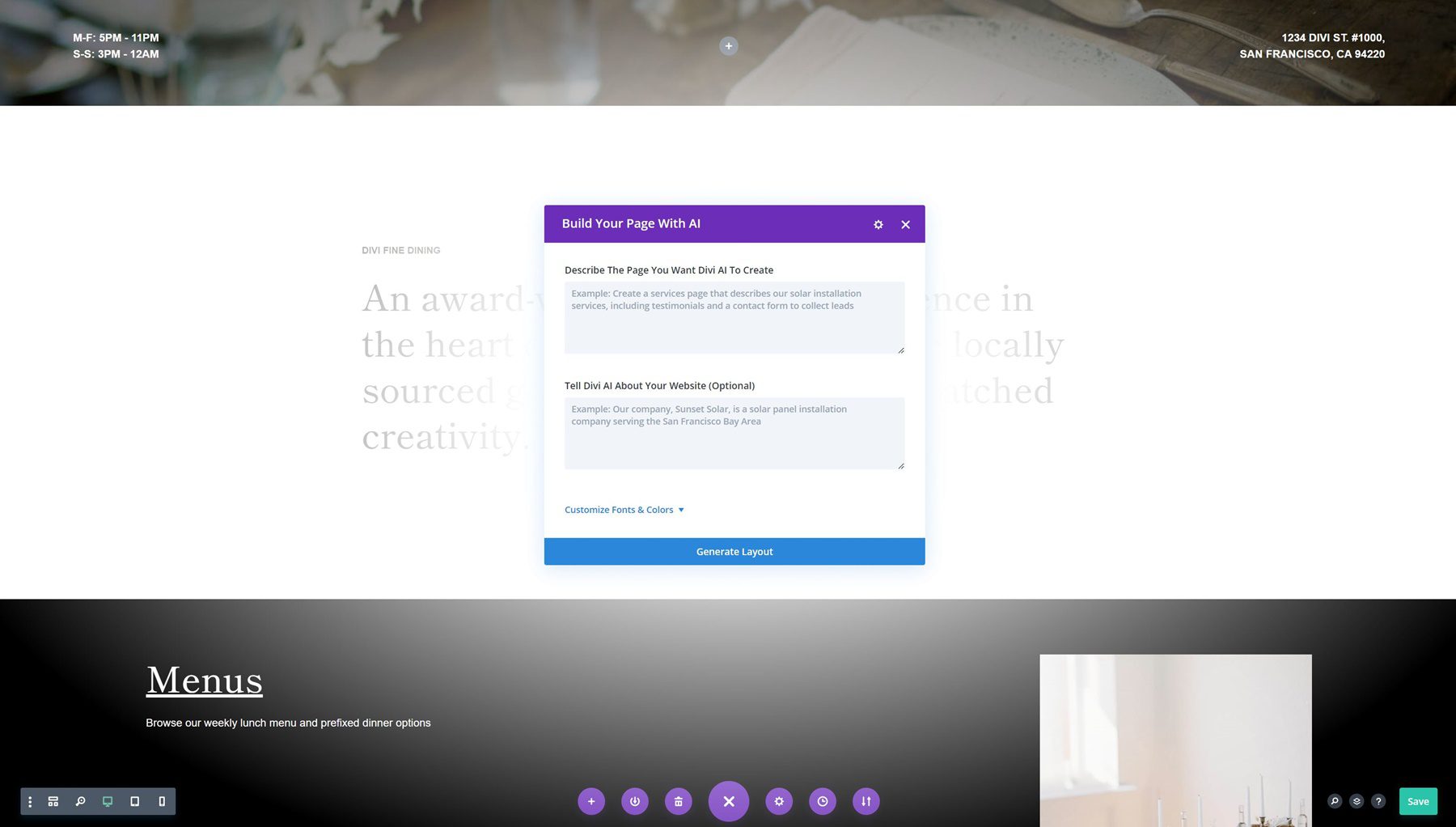




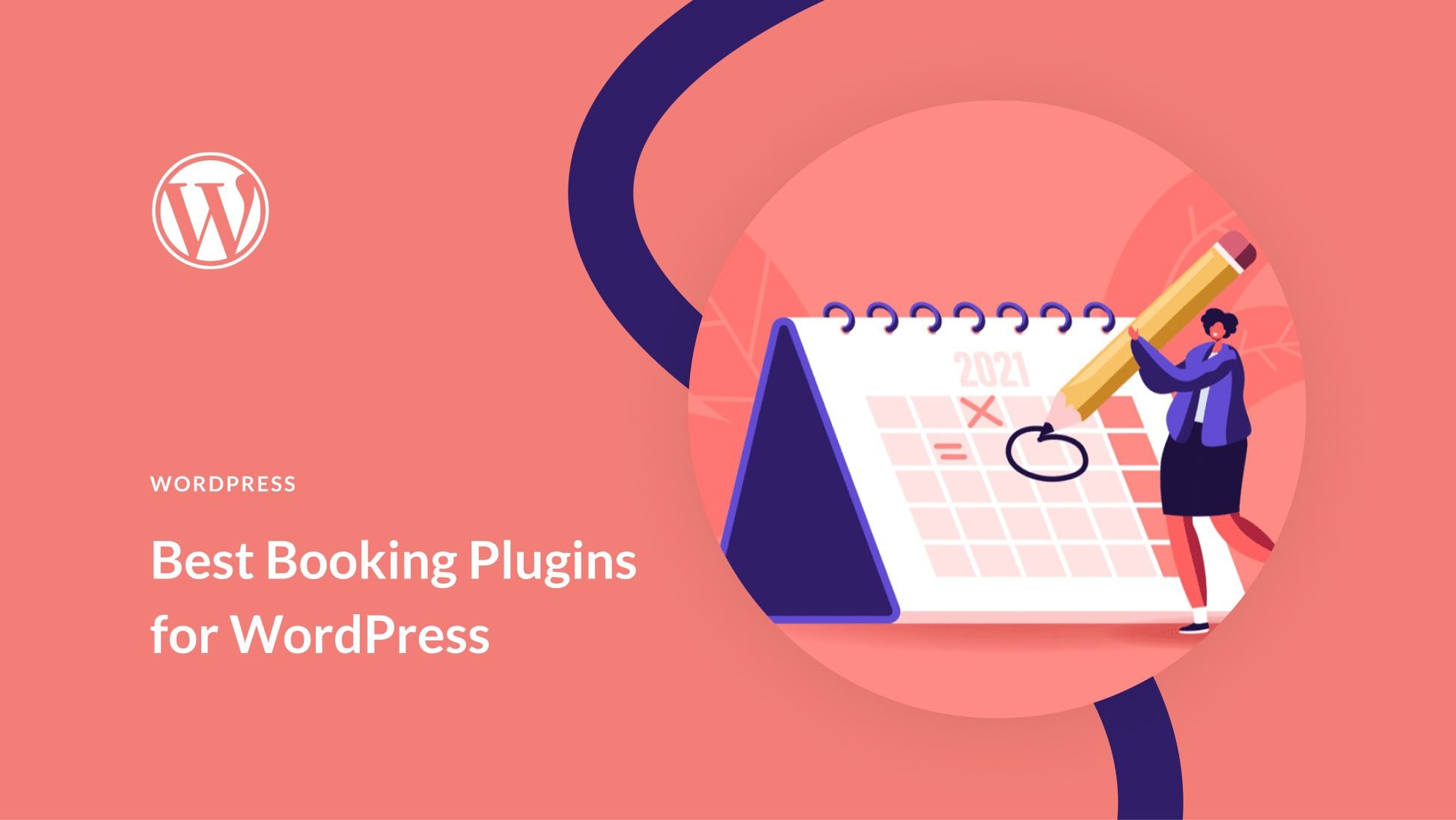
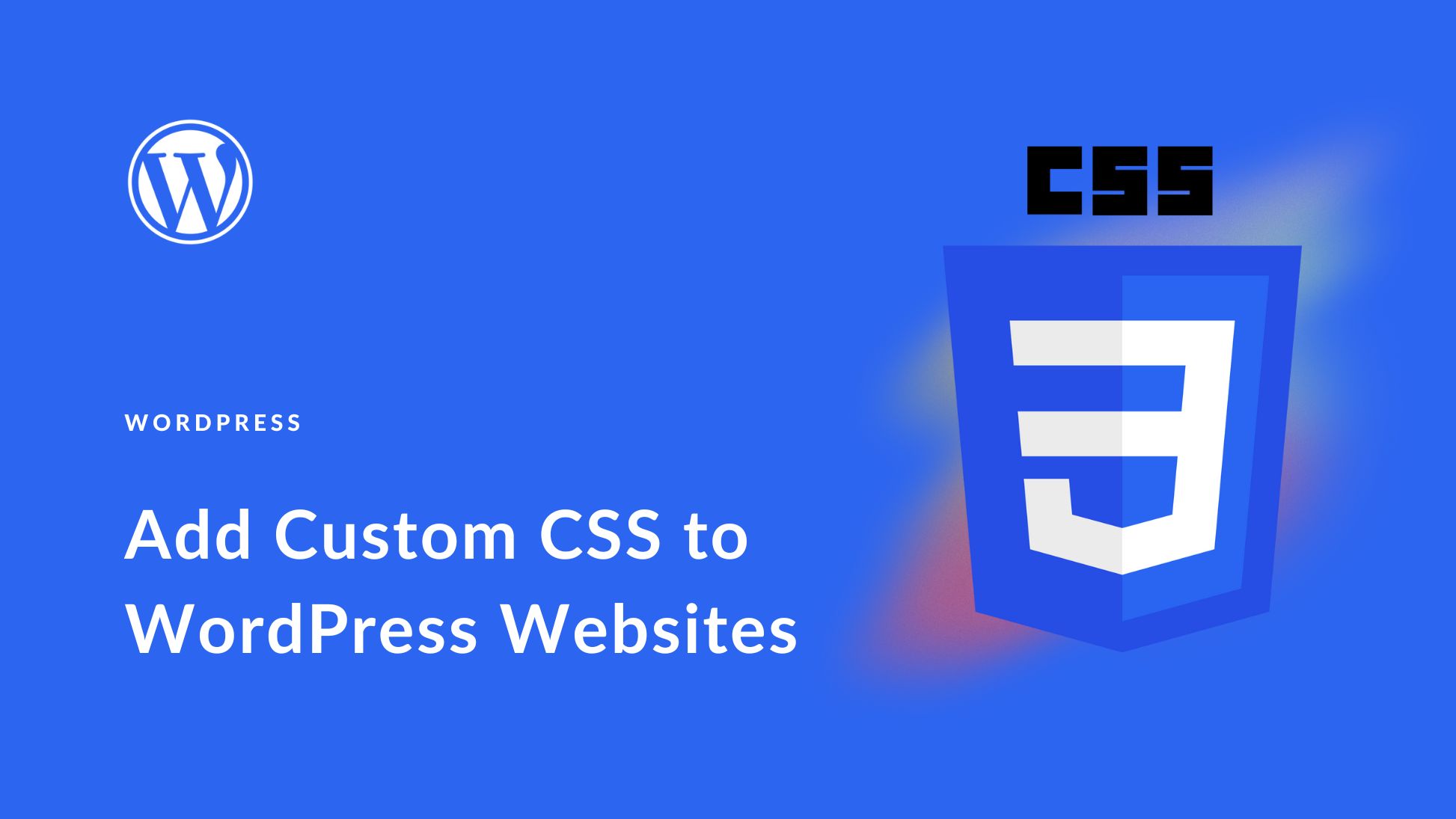

Leave A Reply